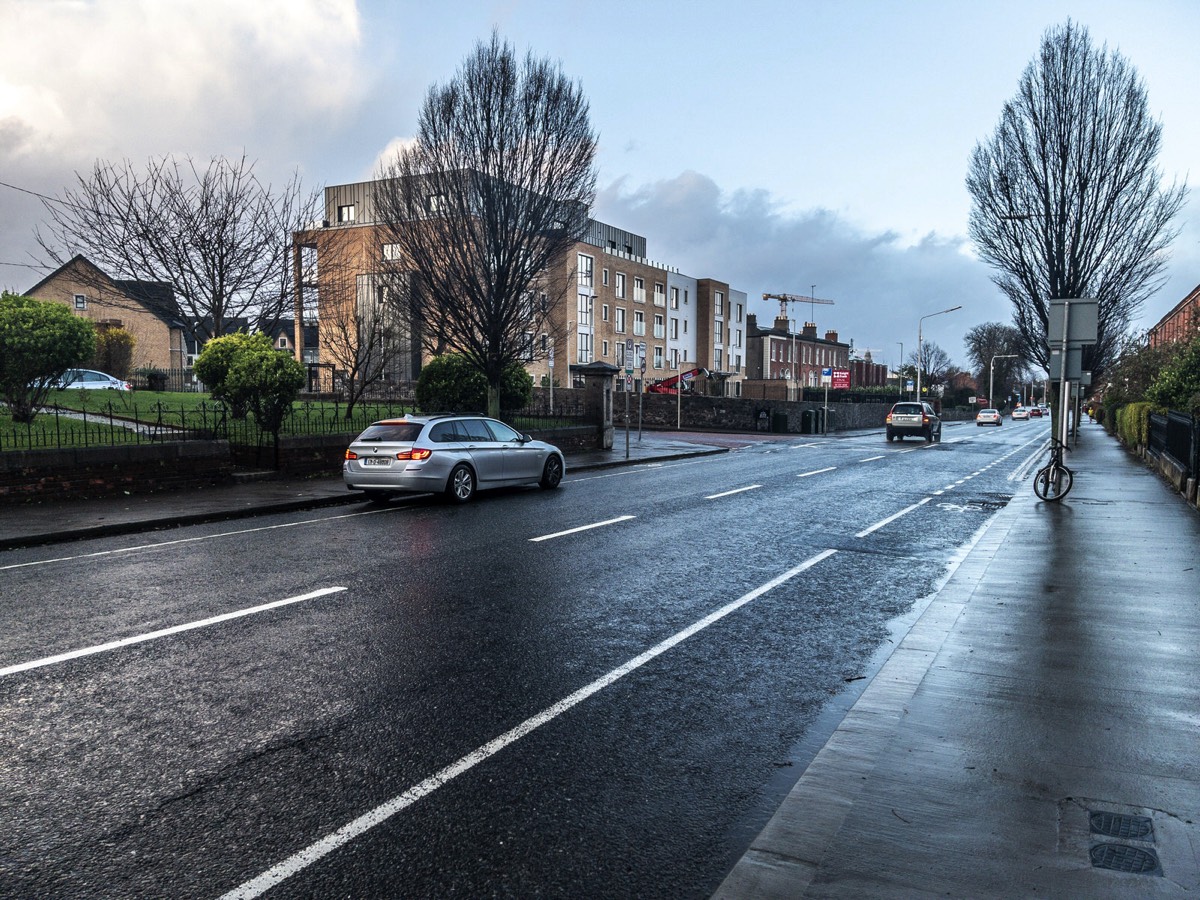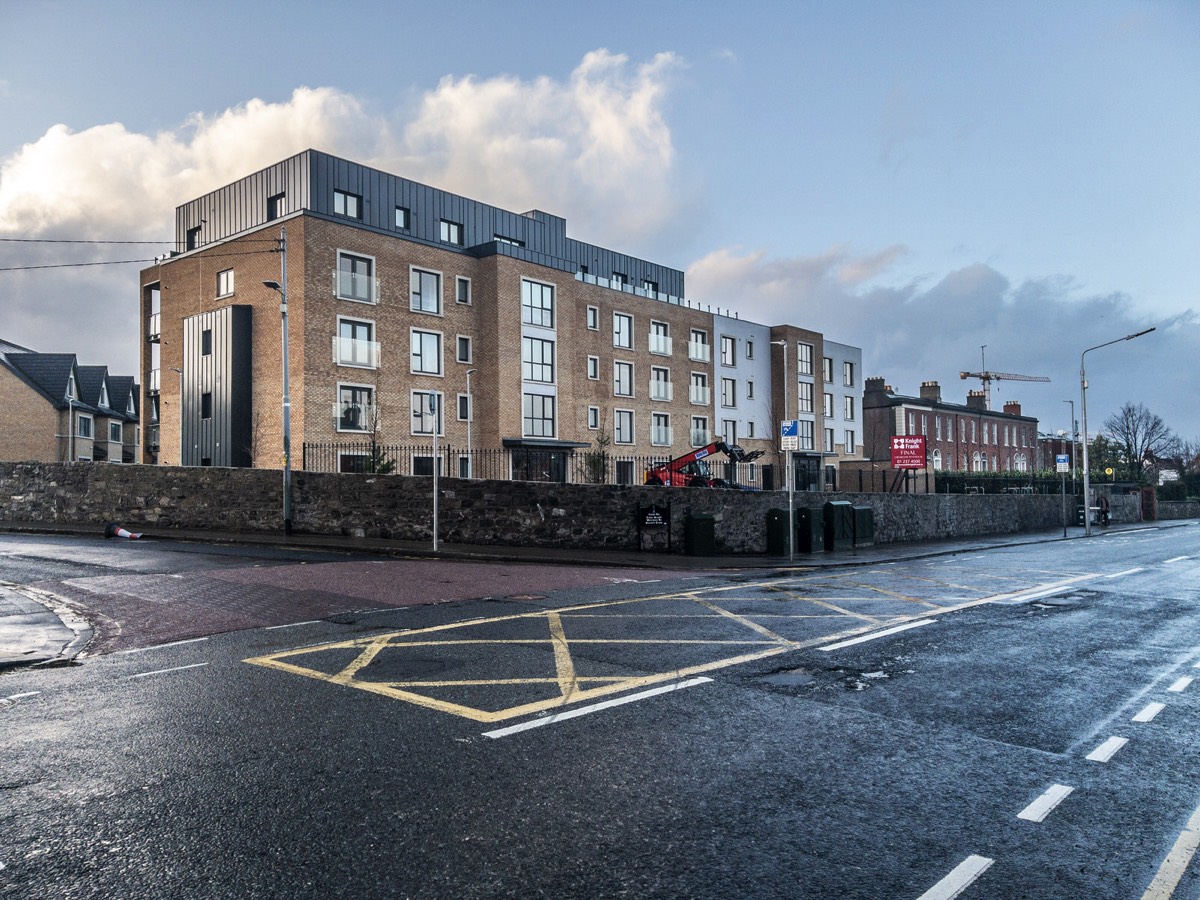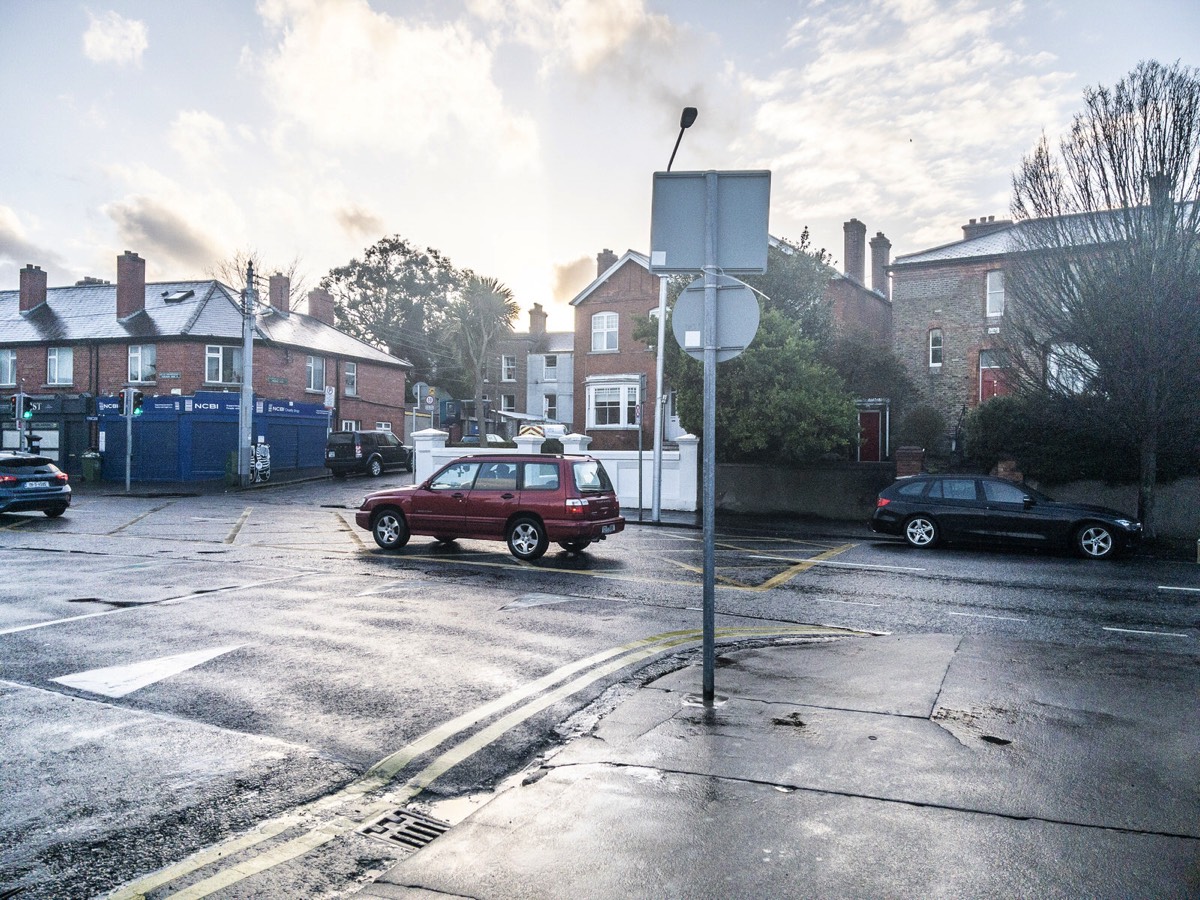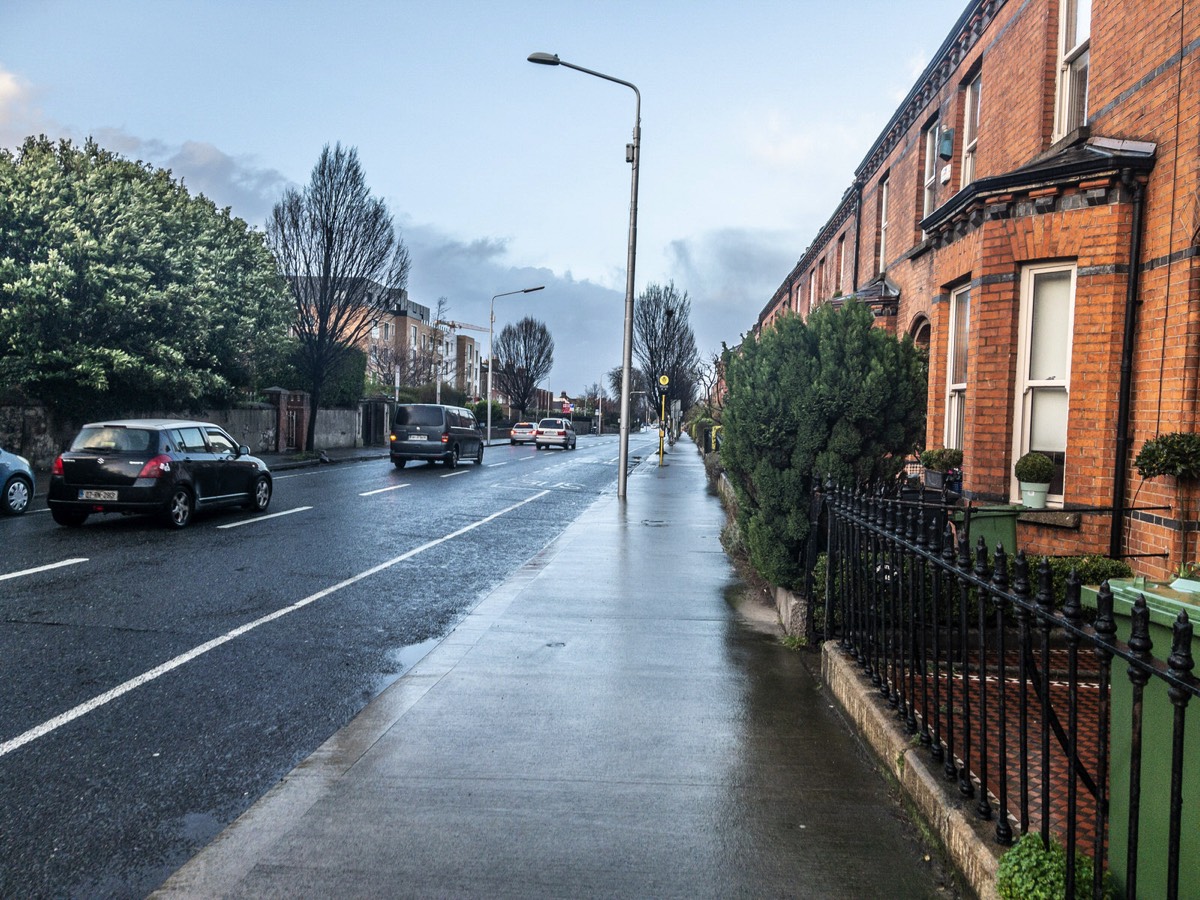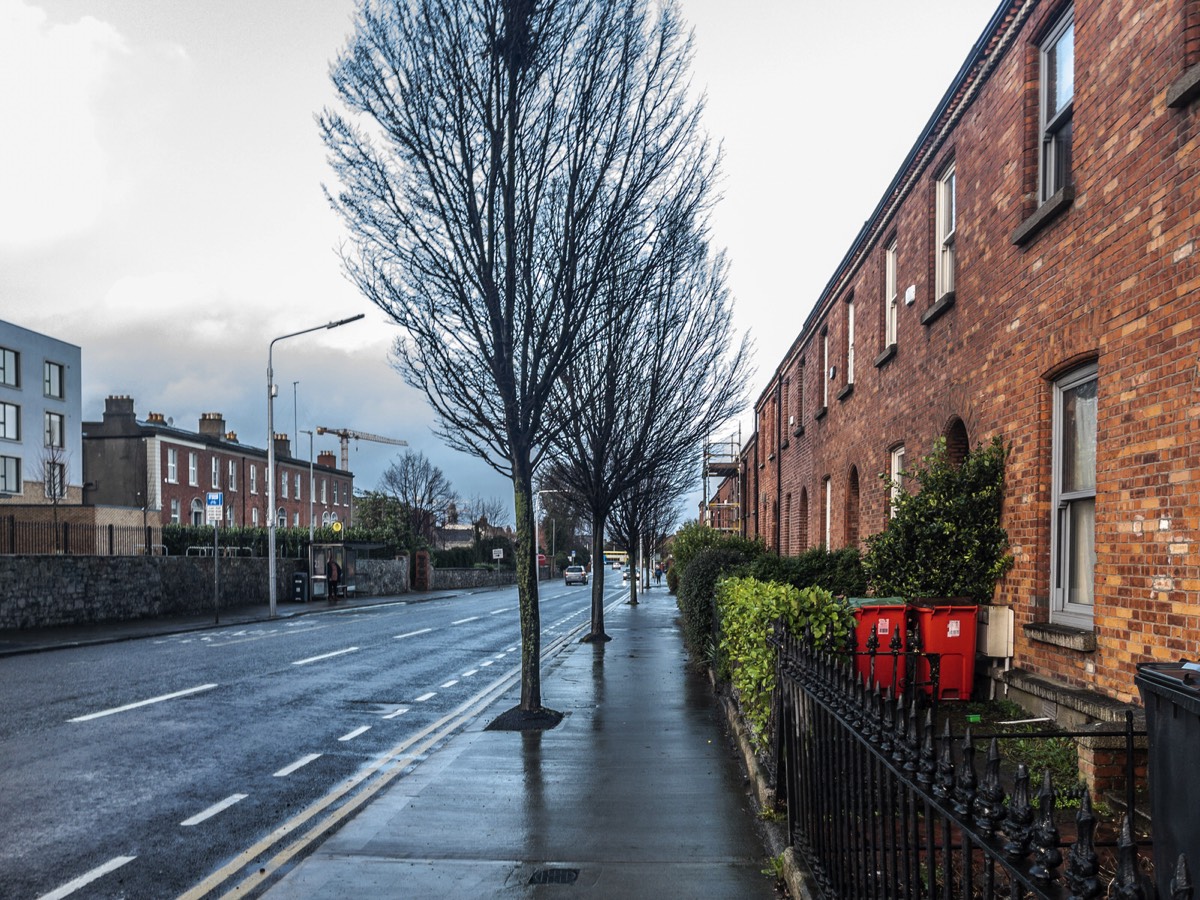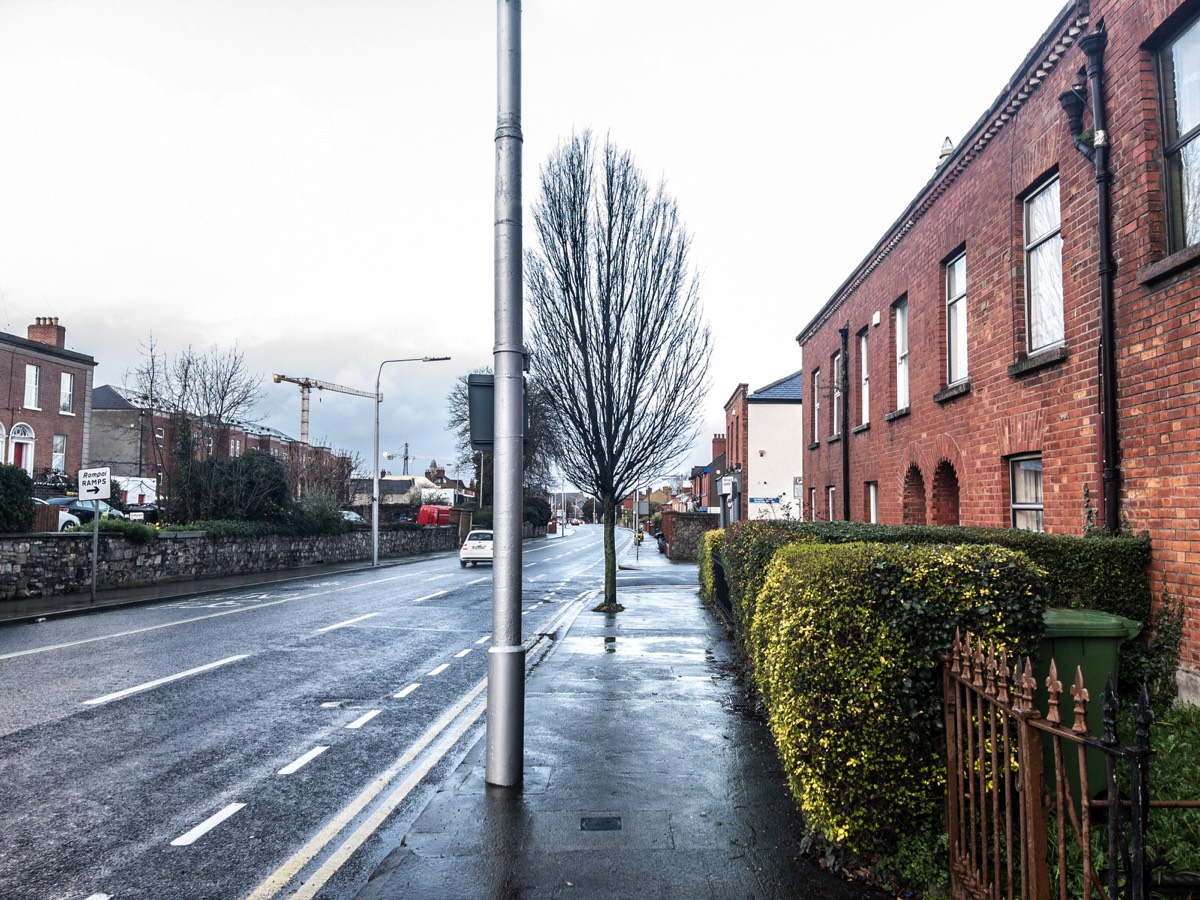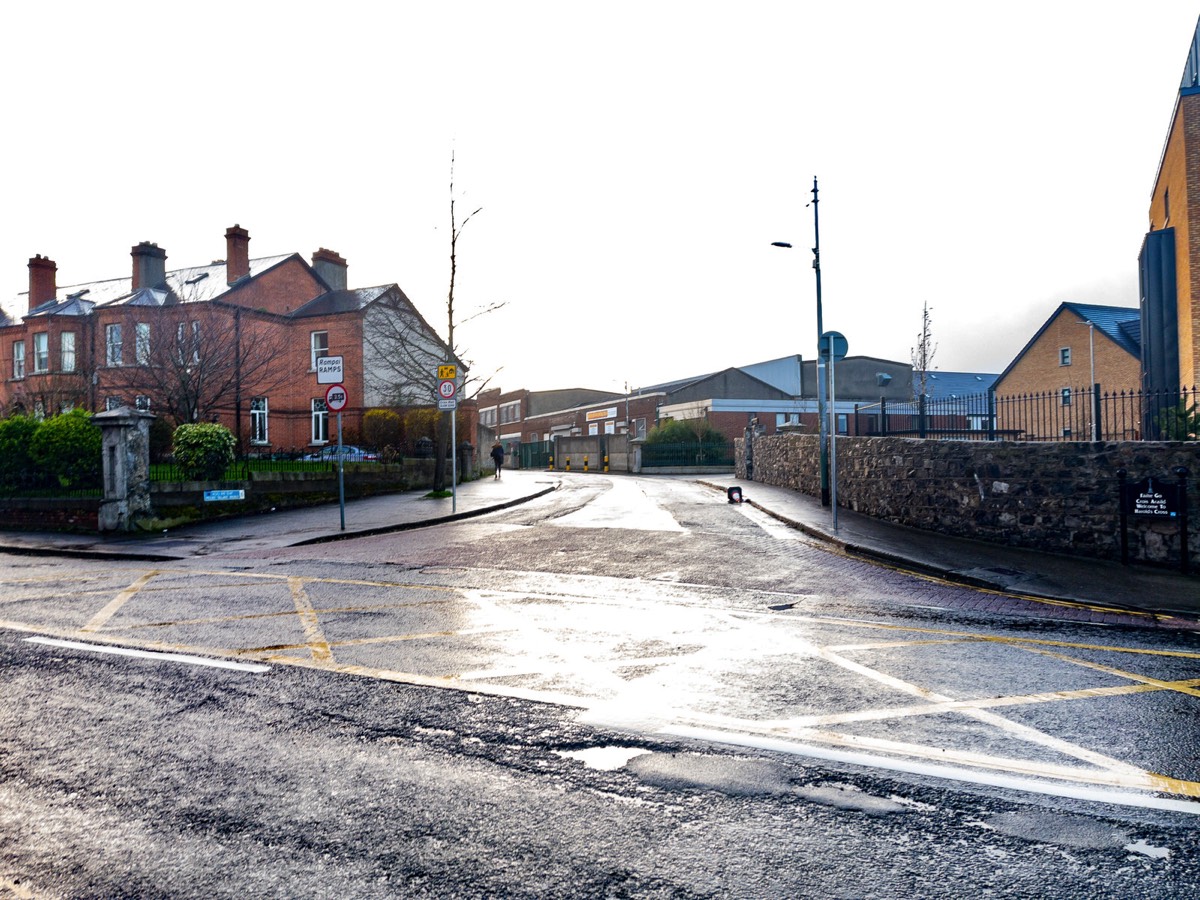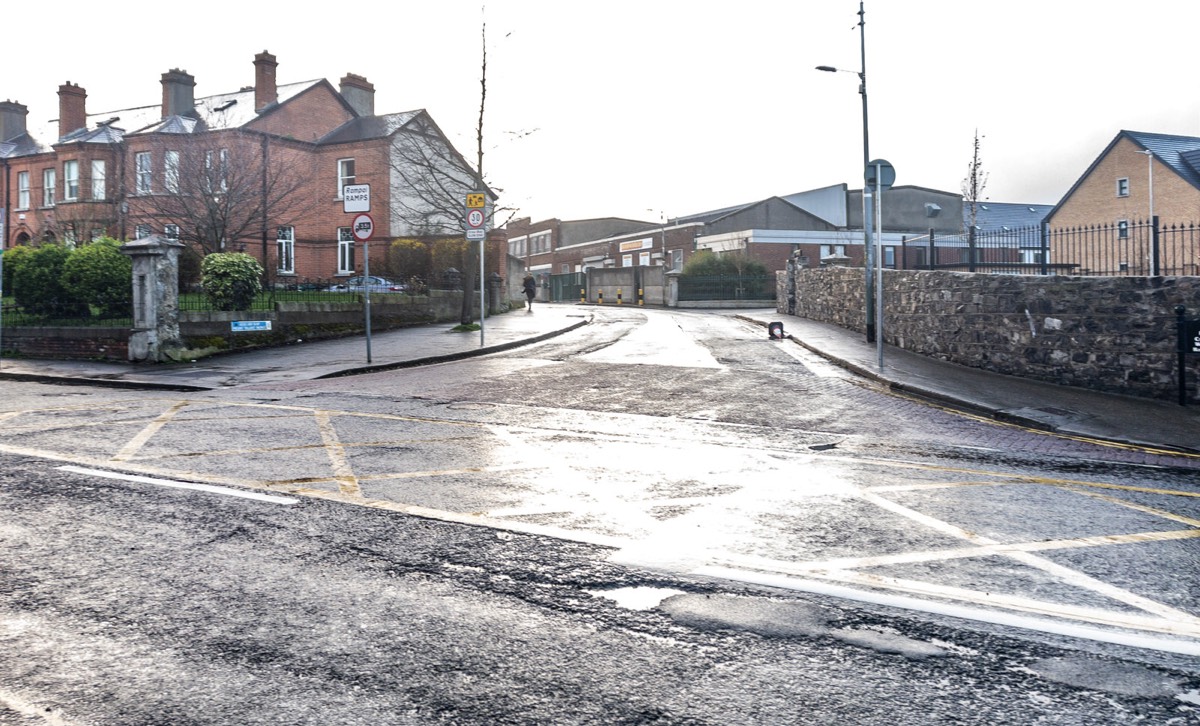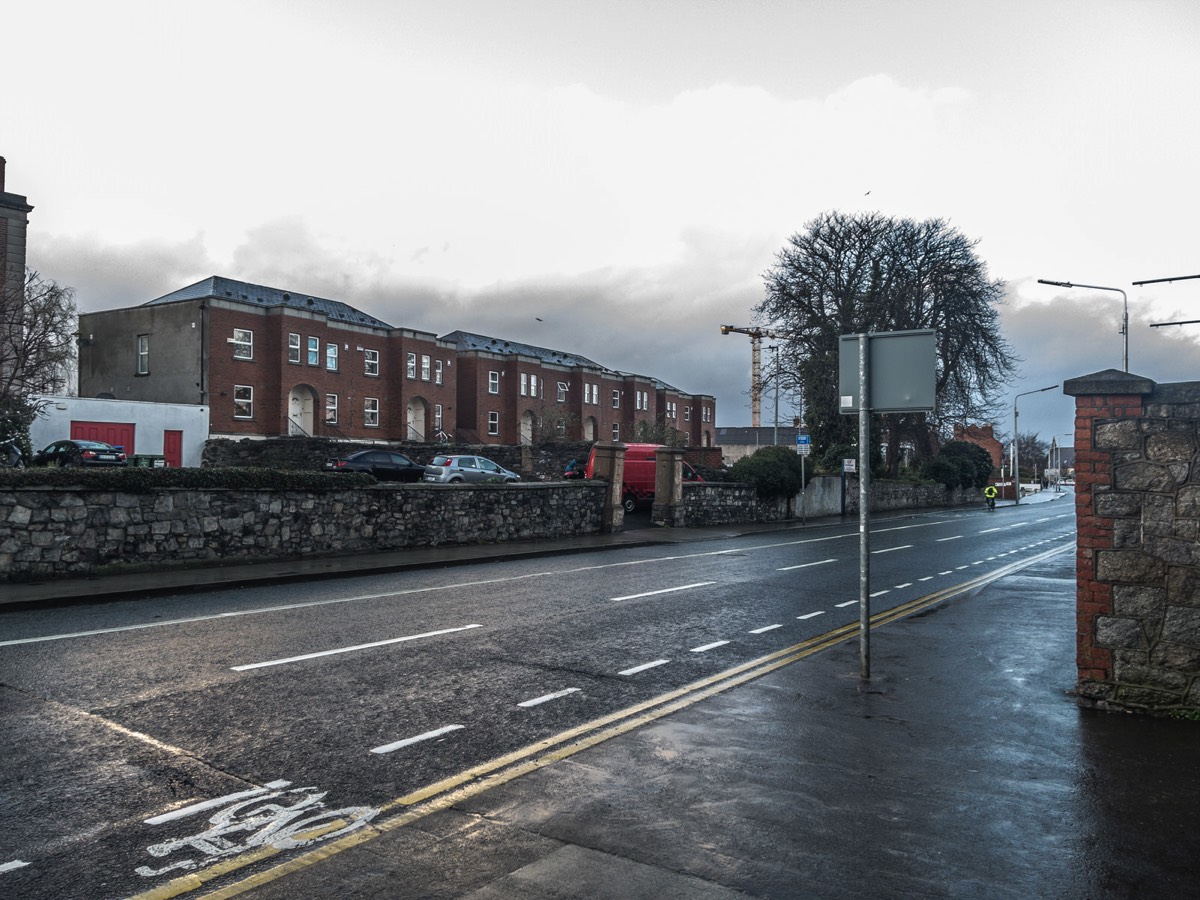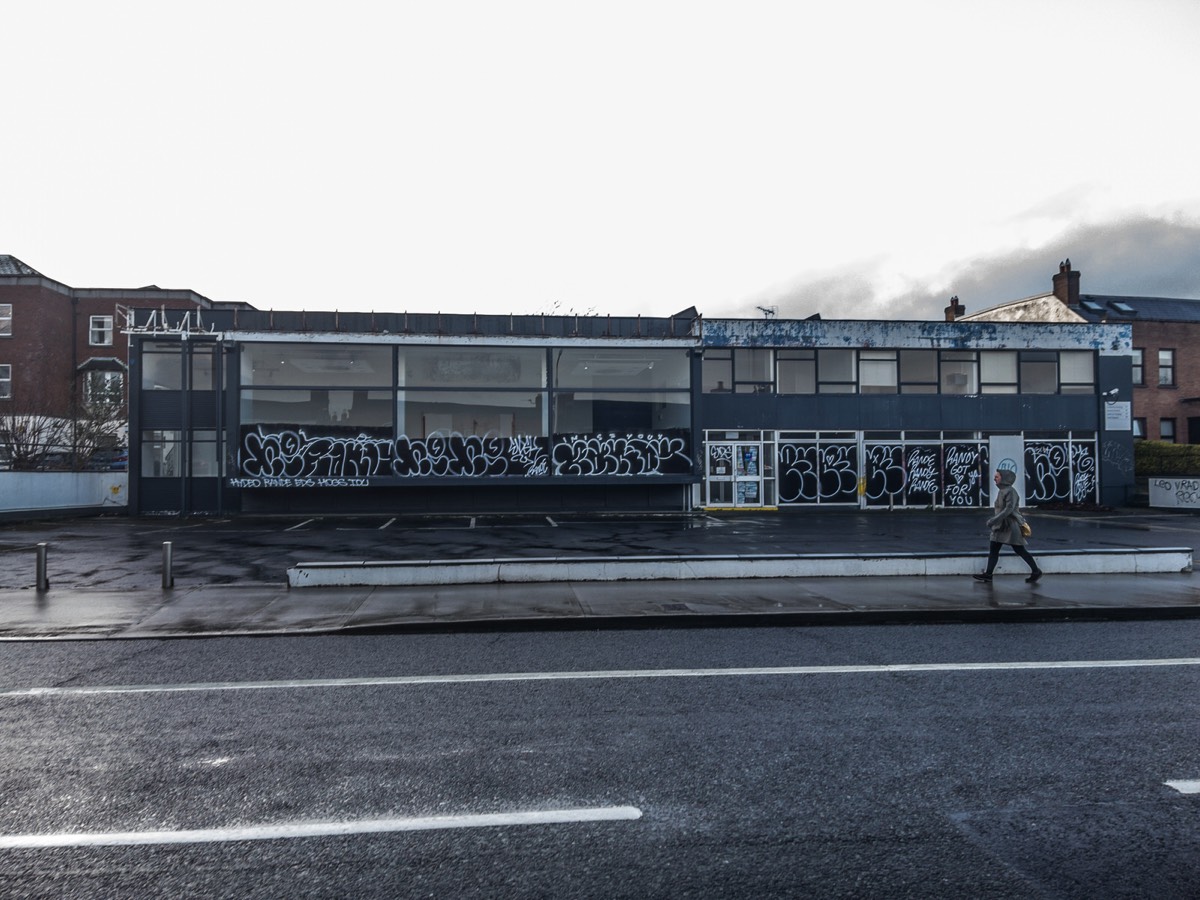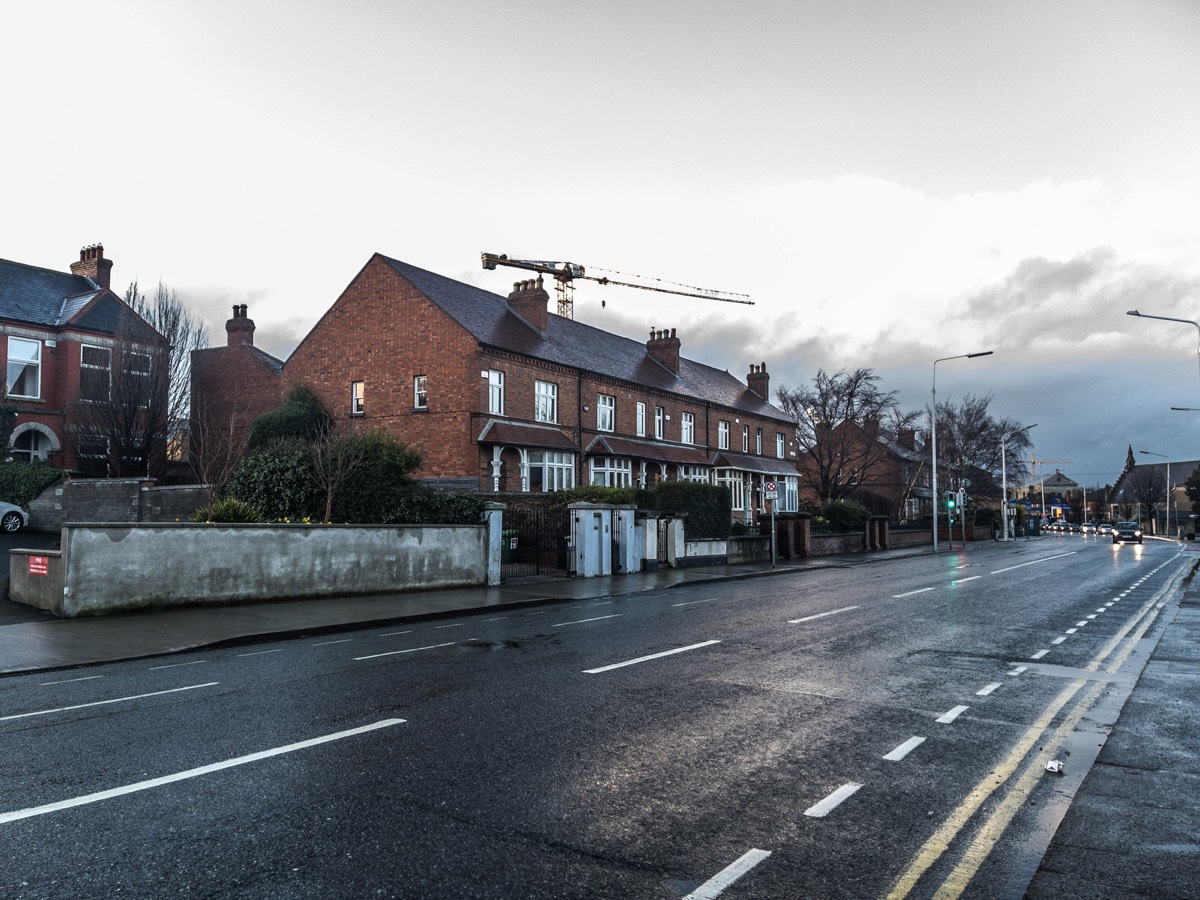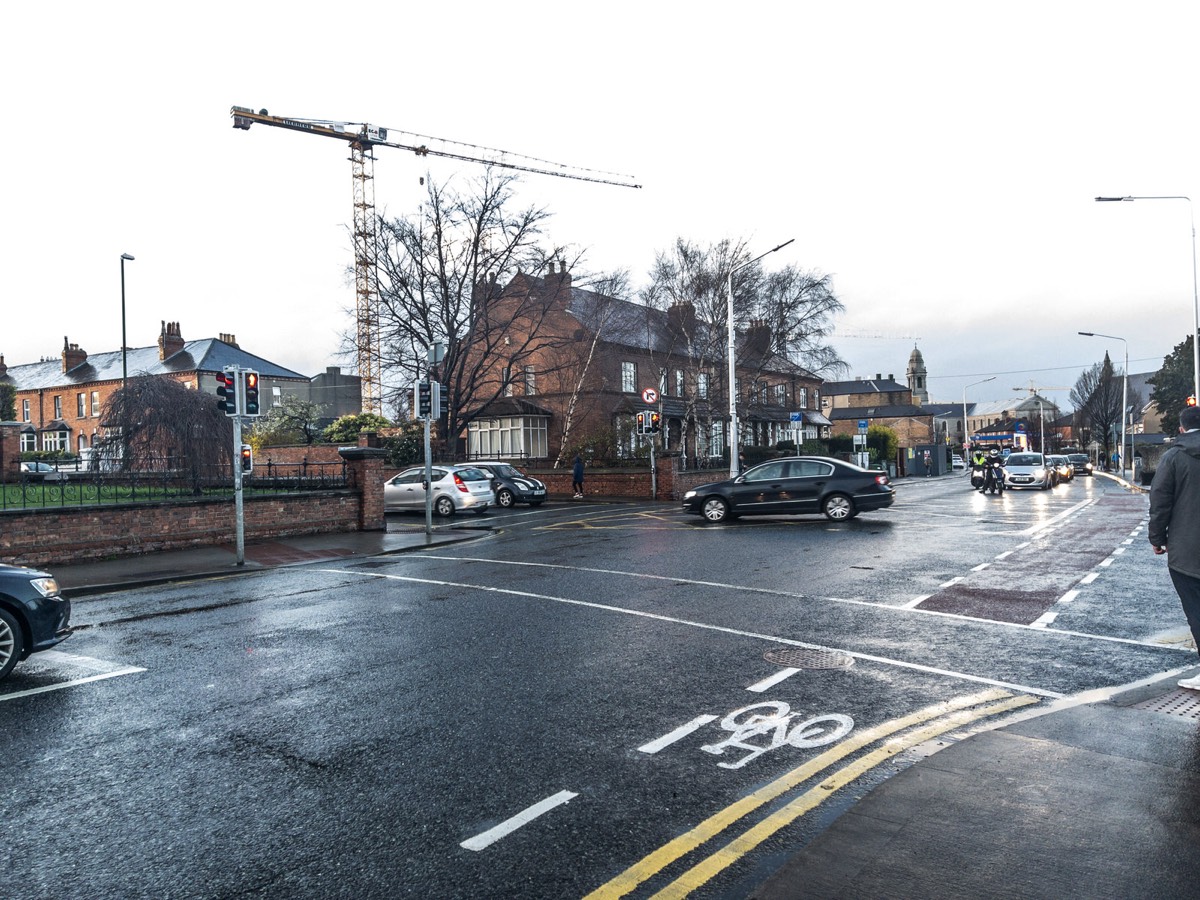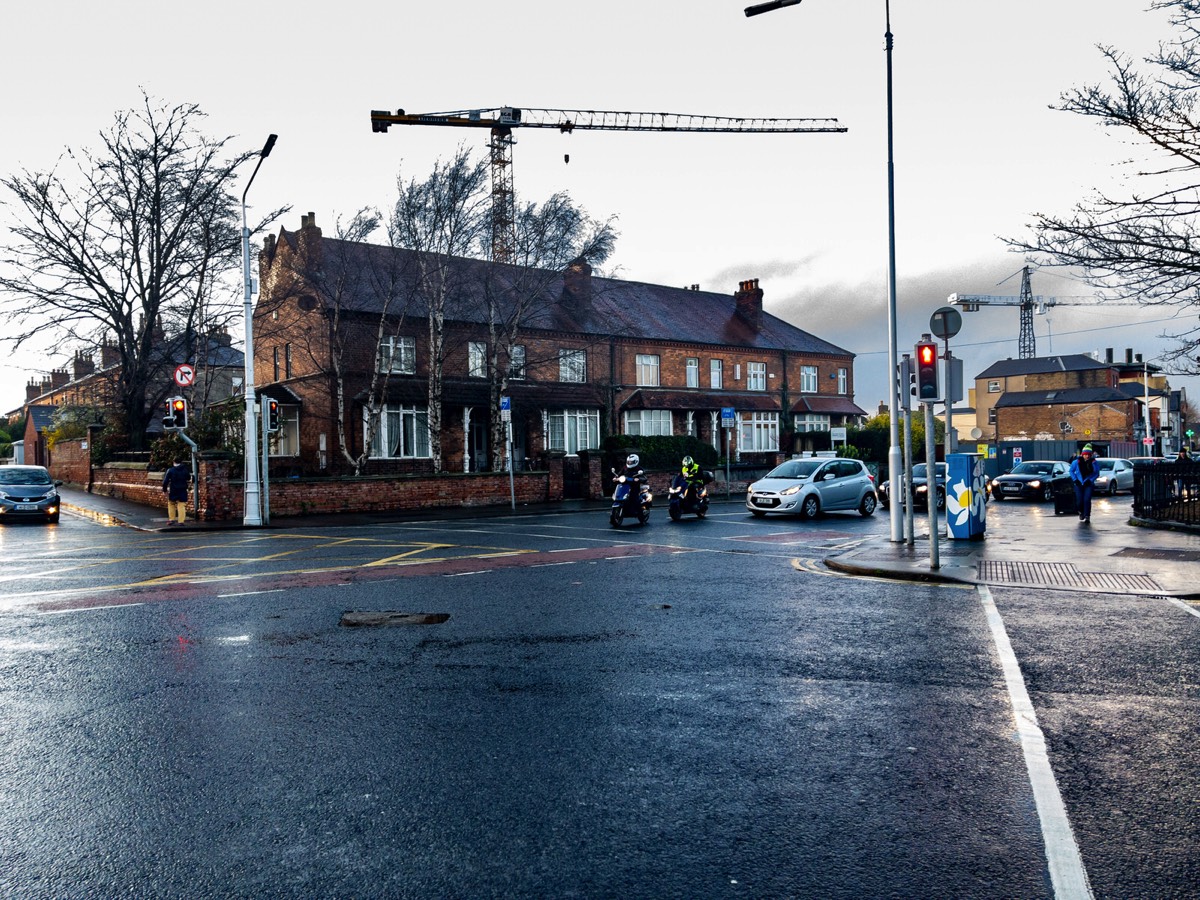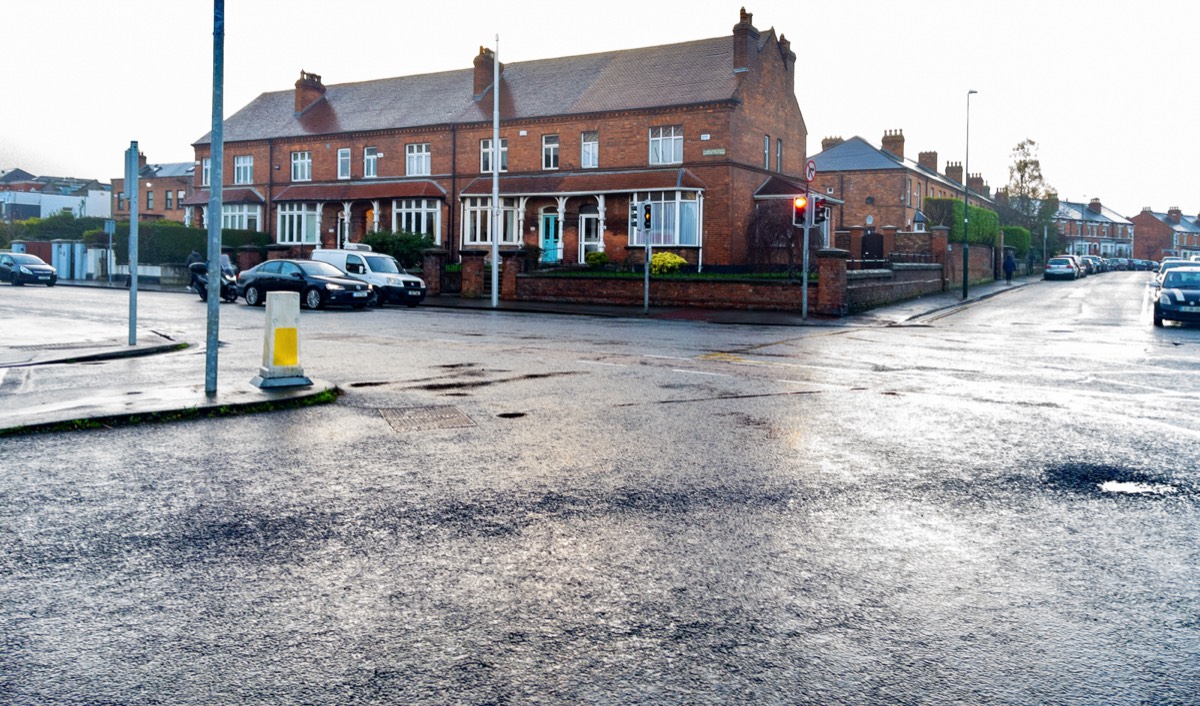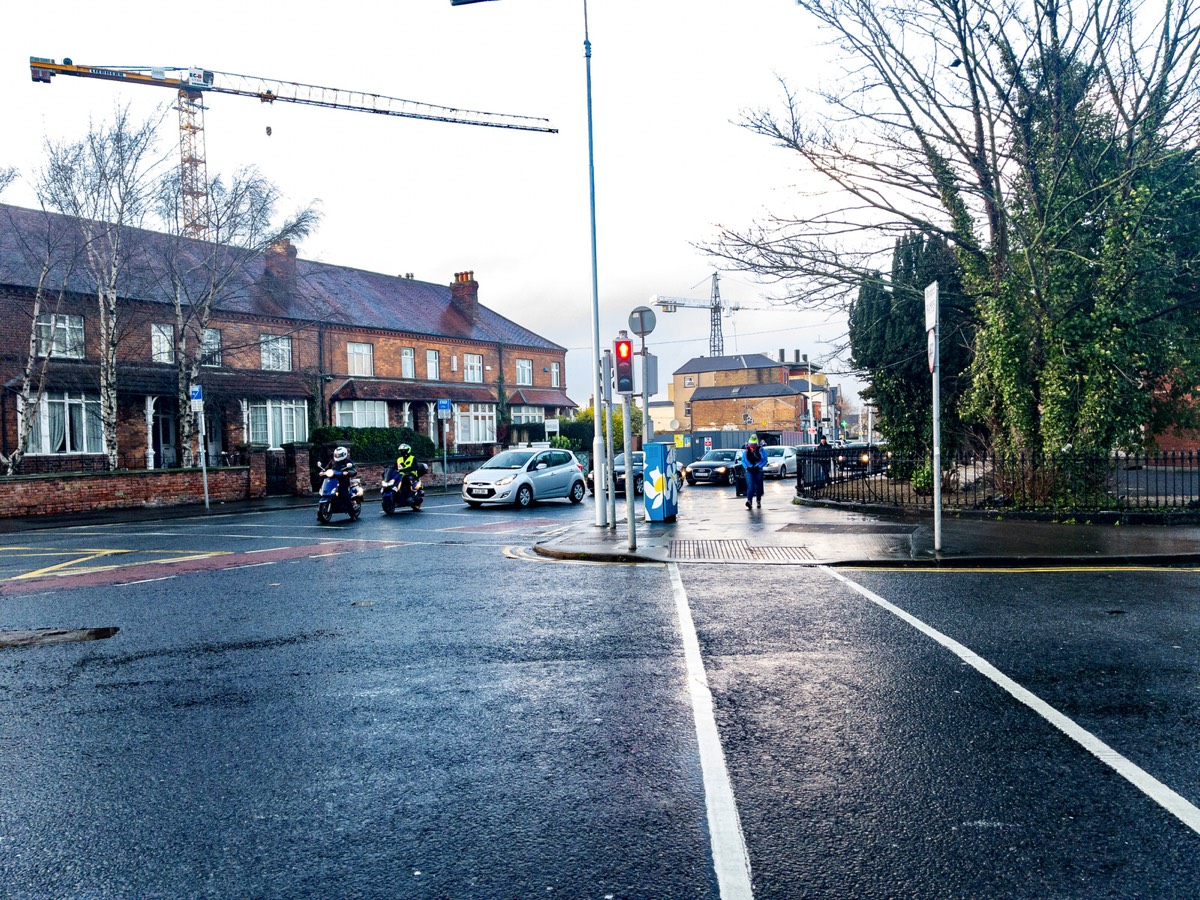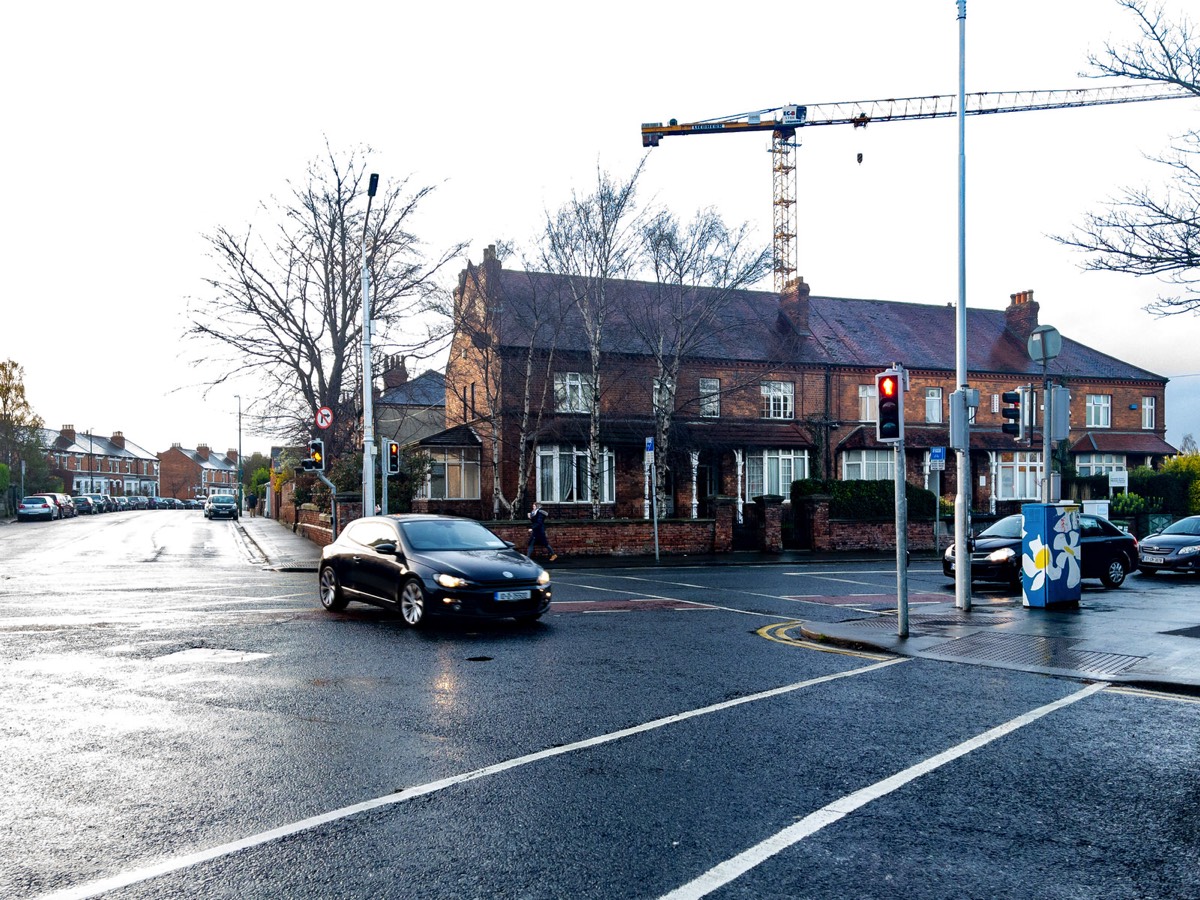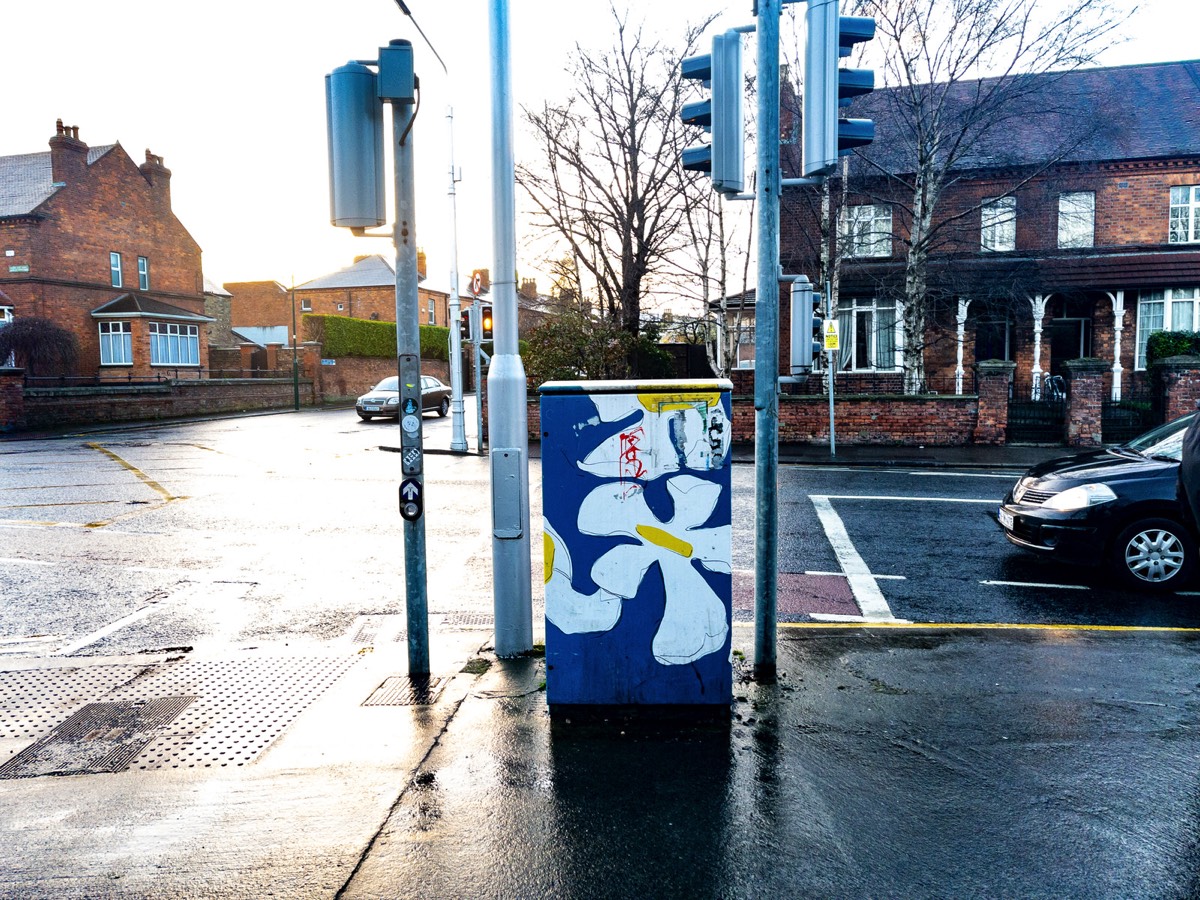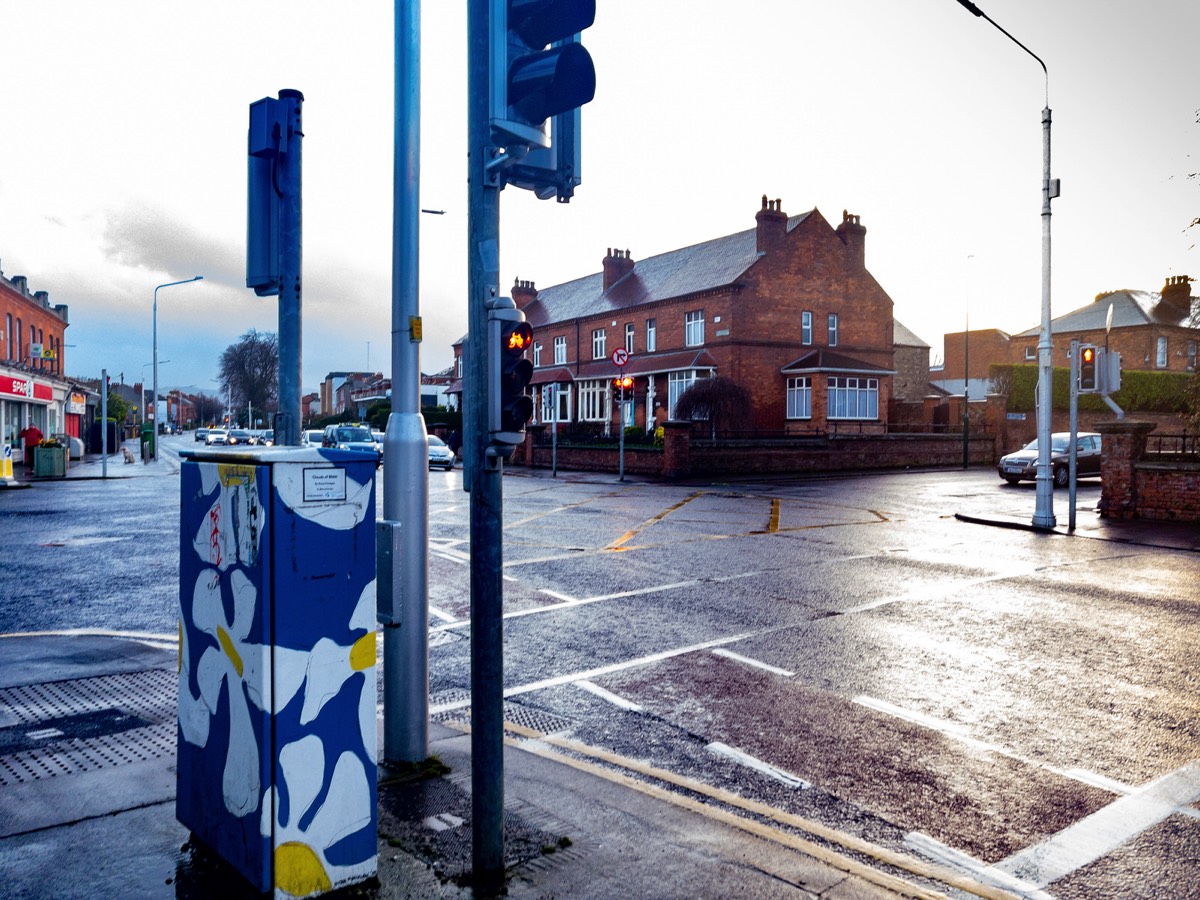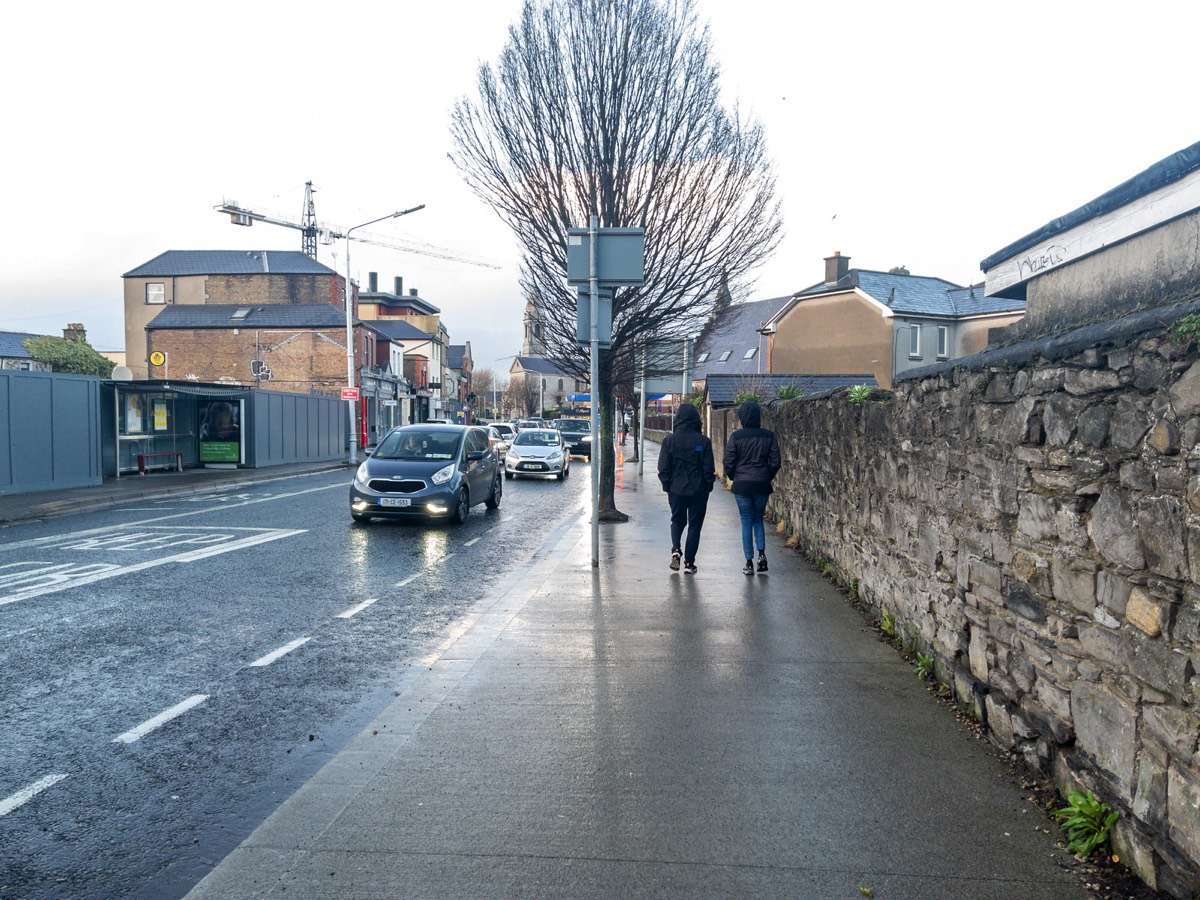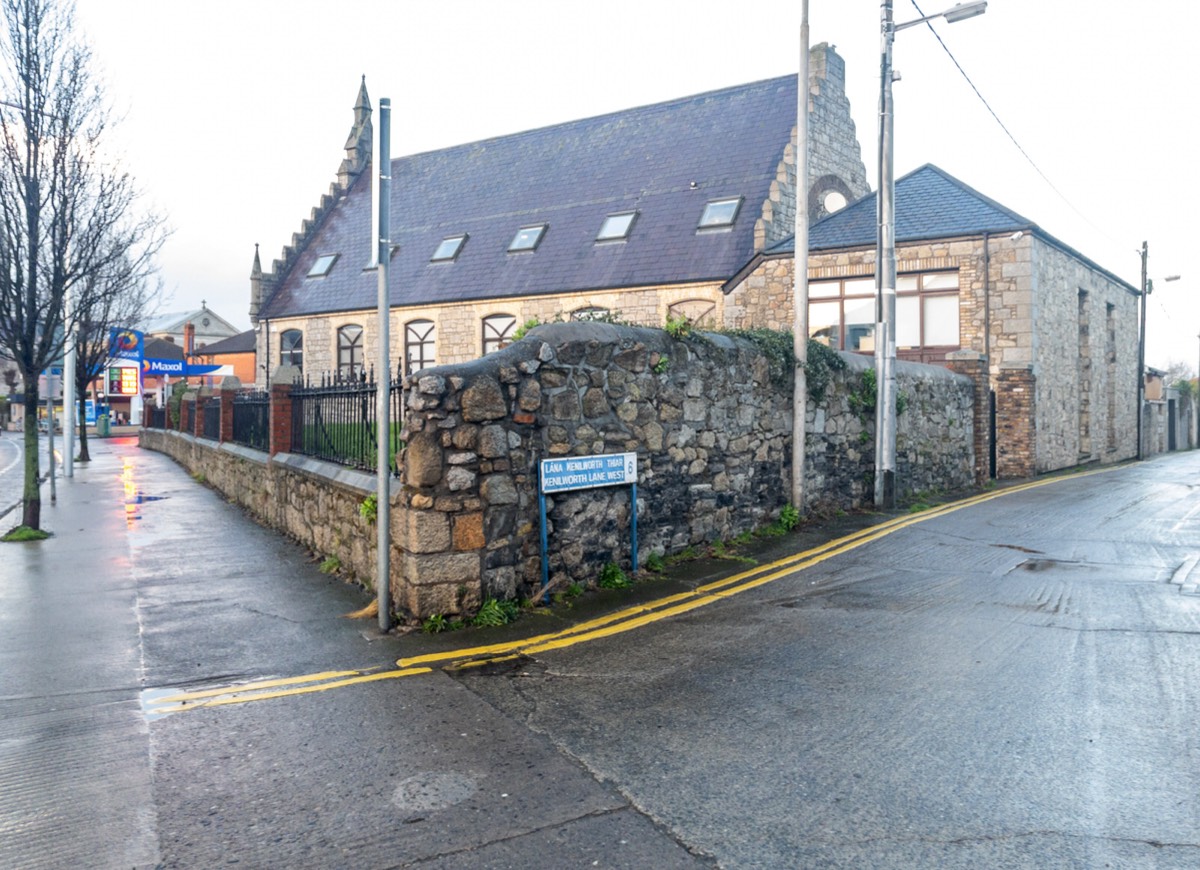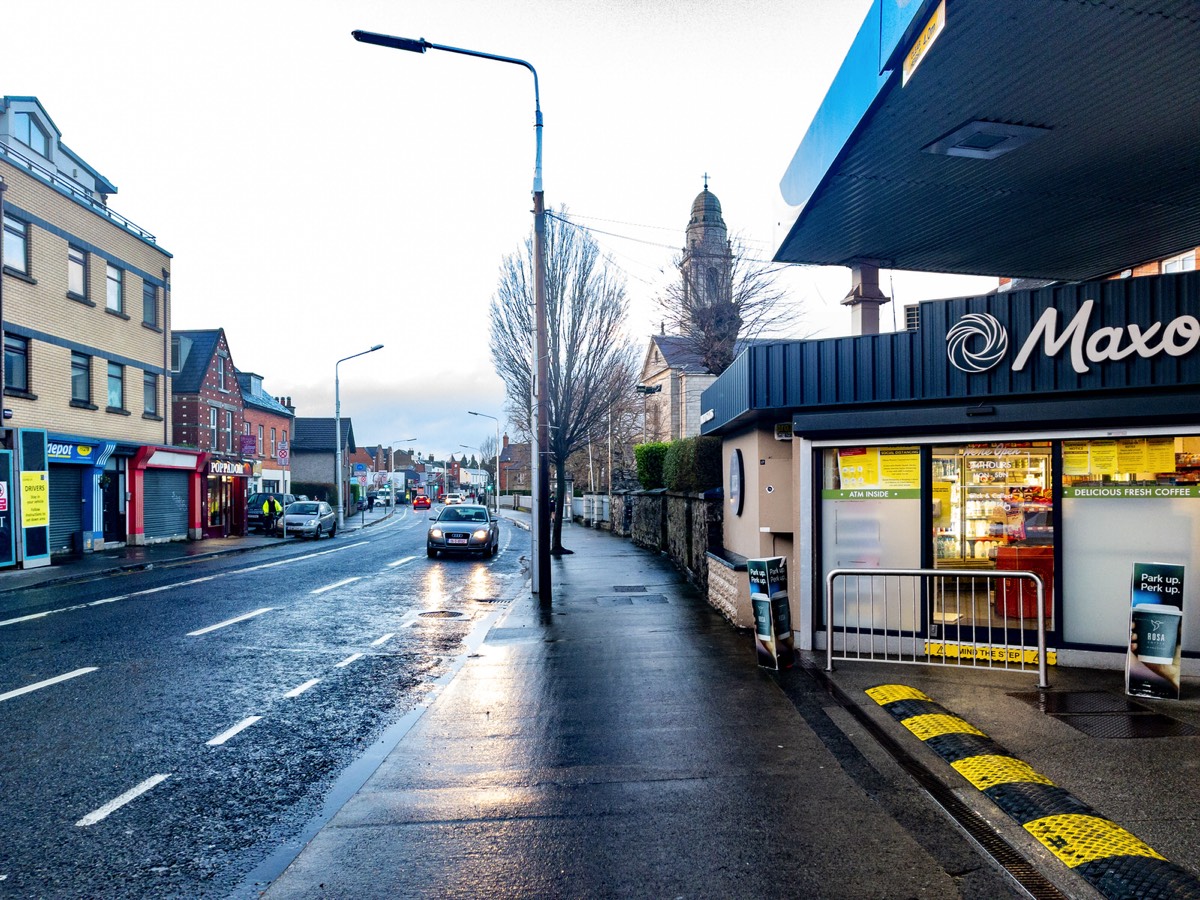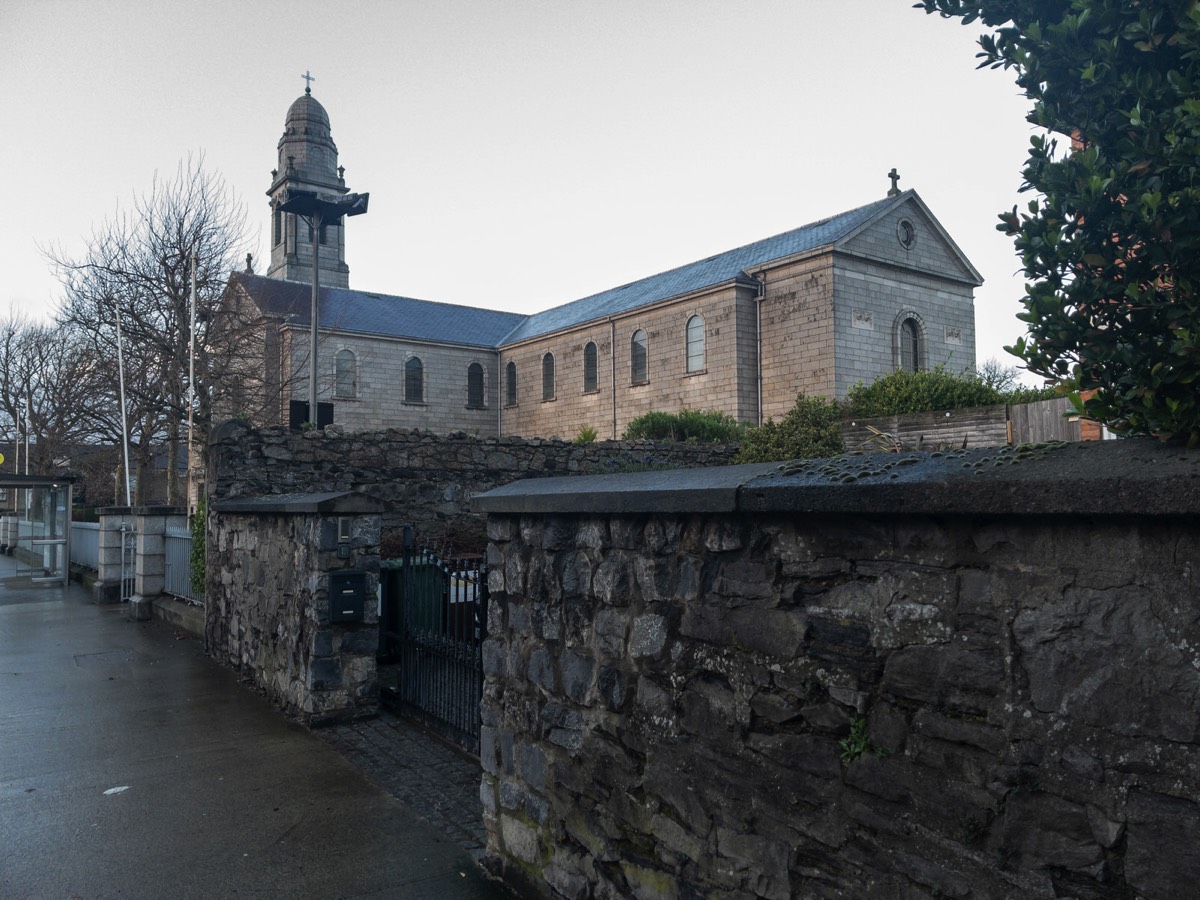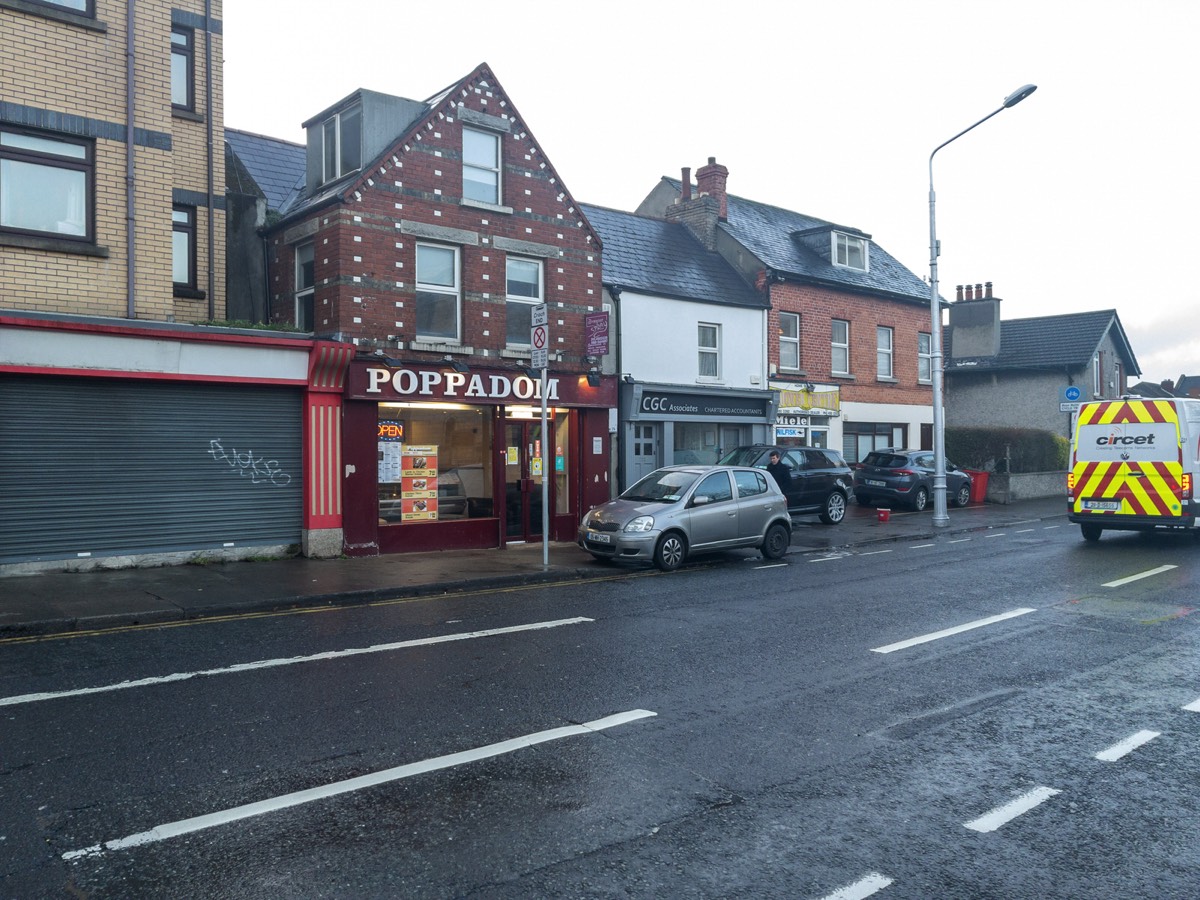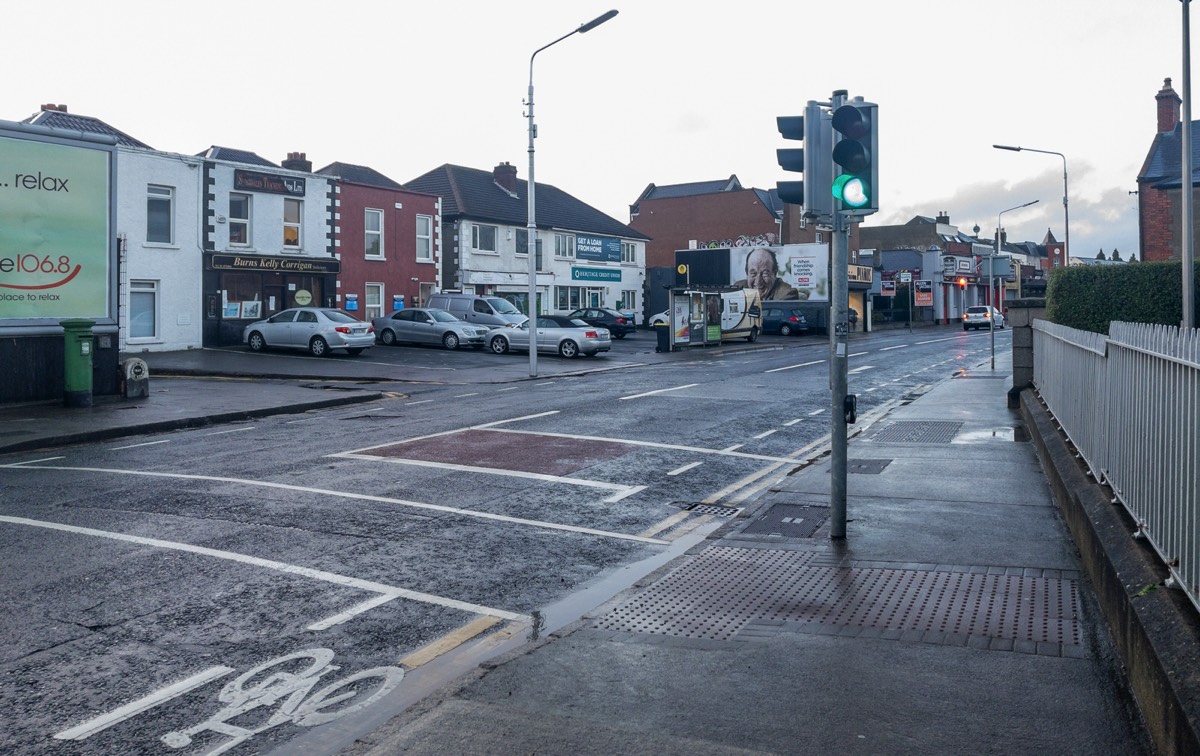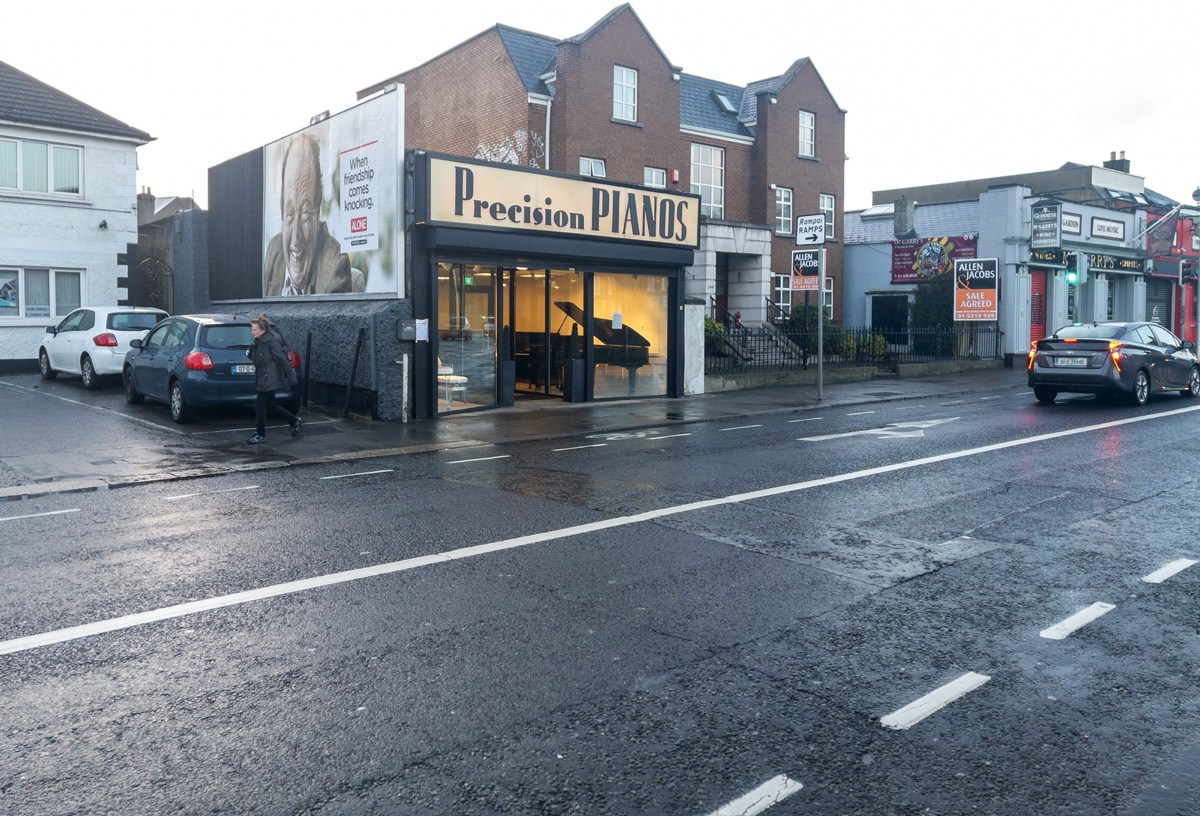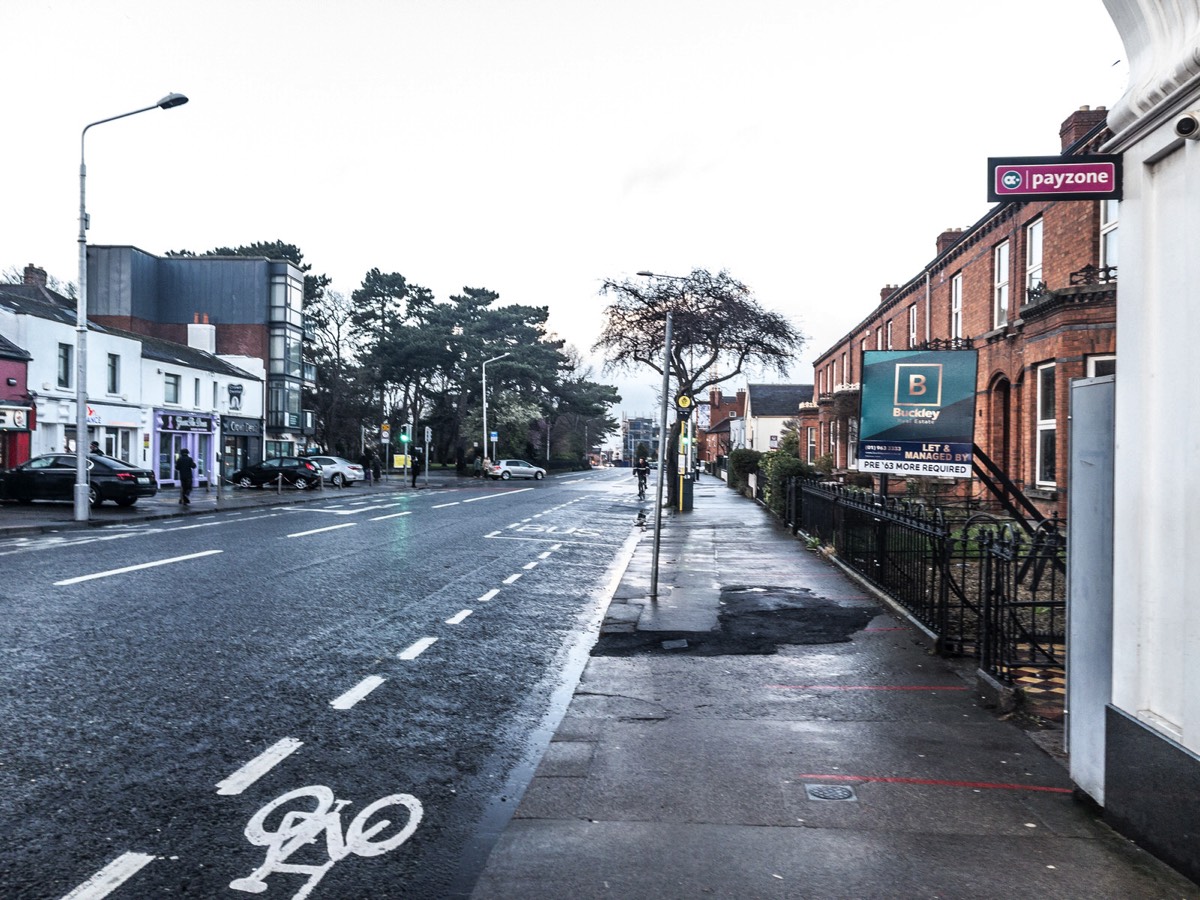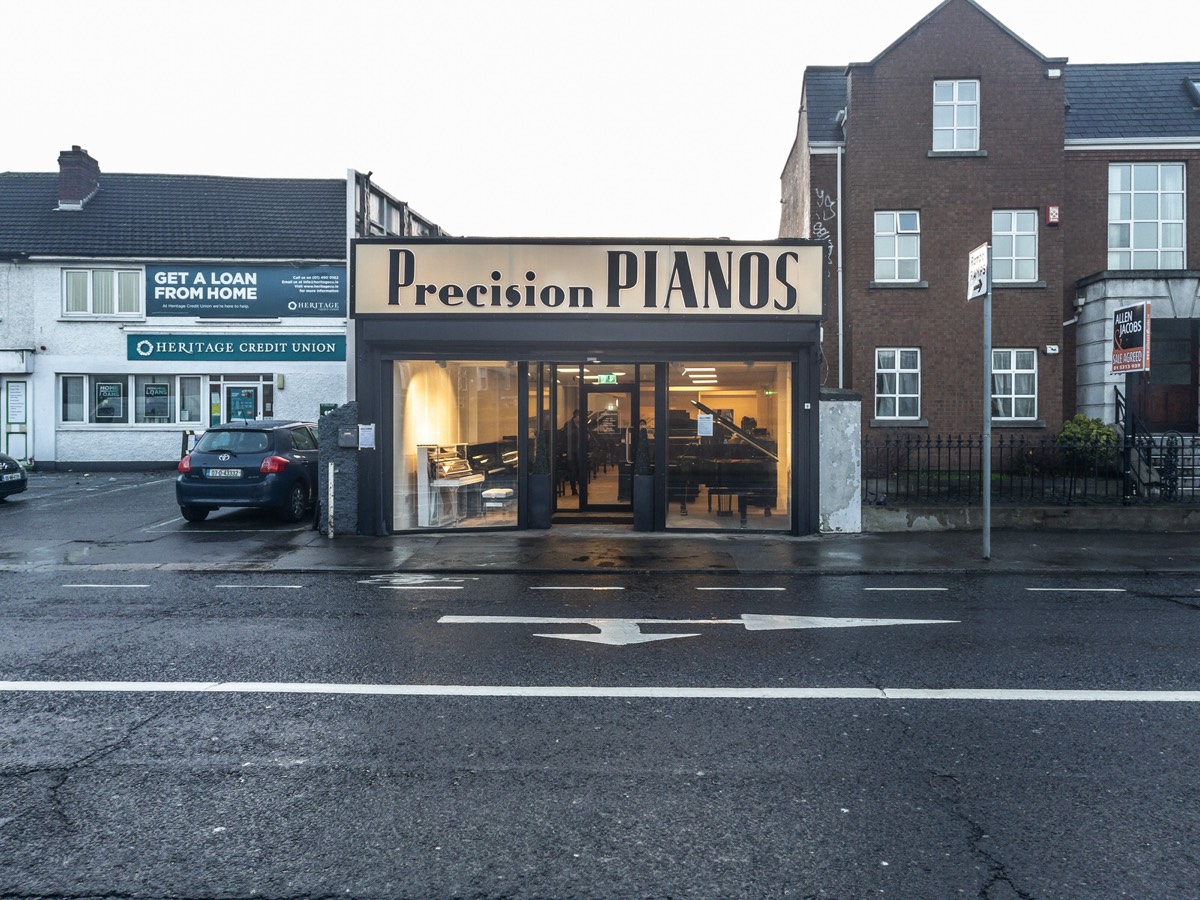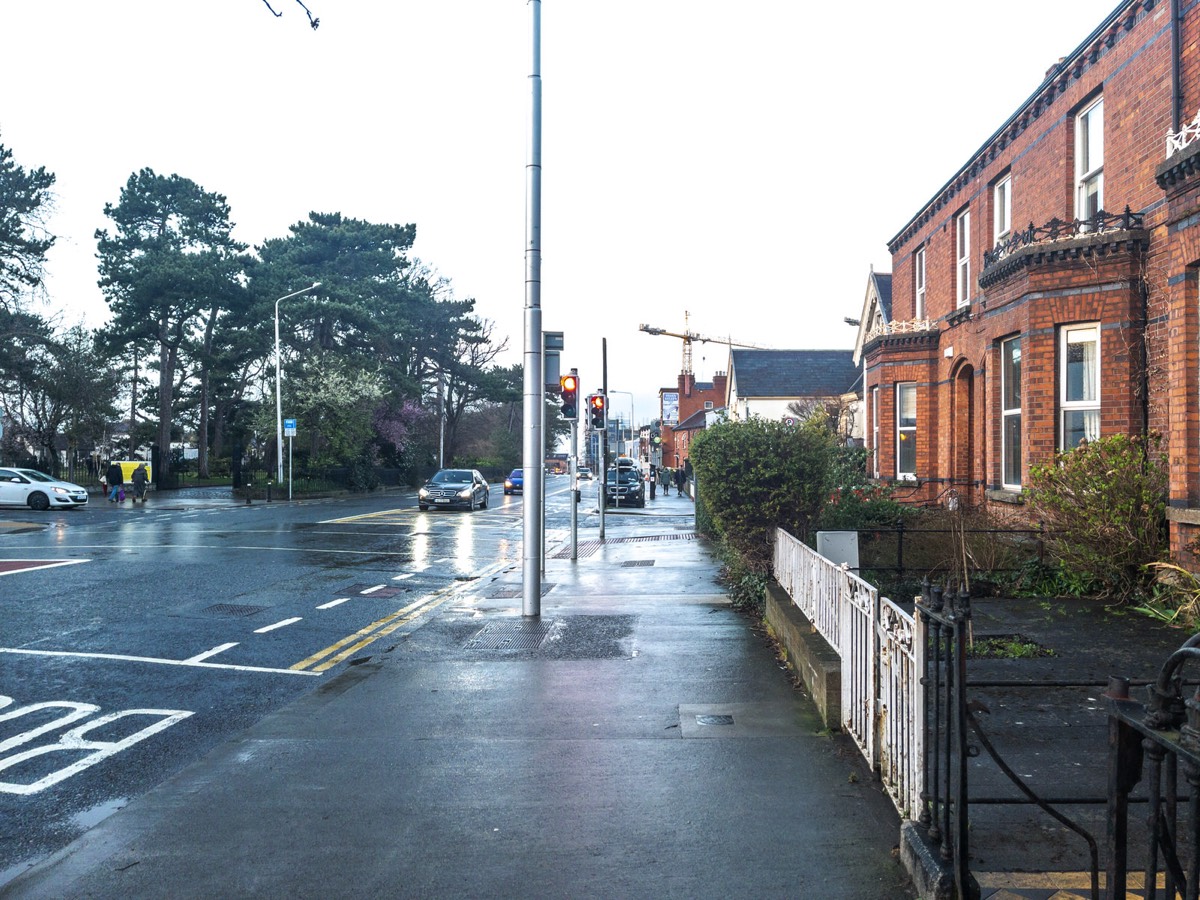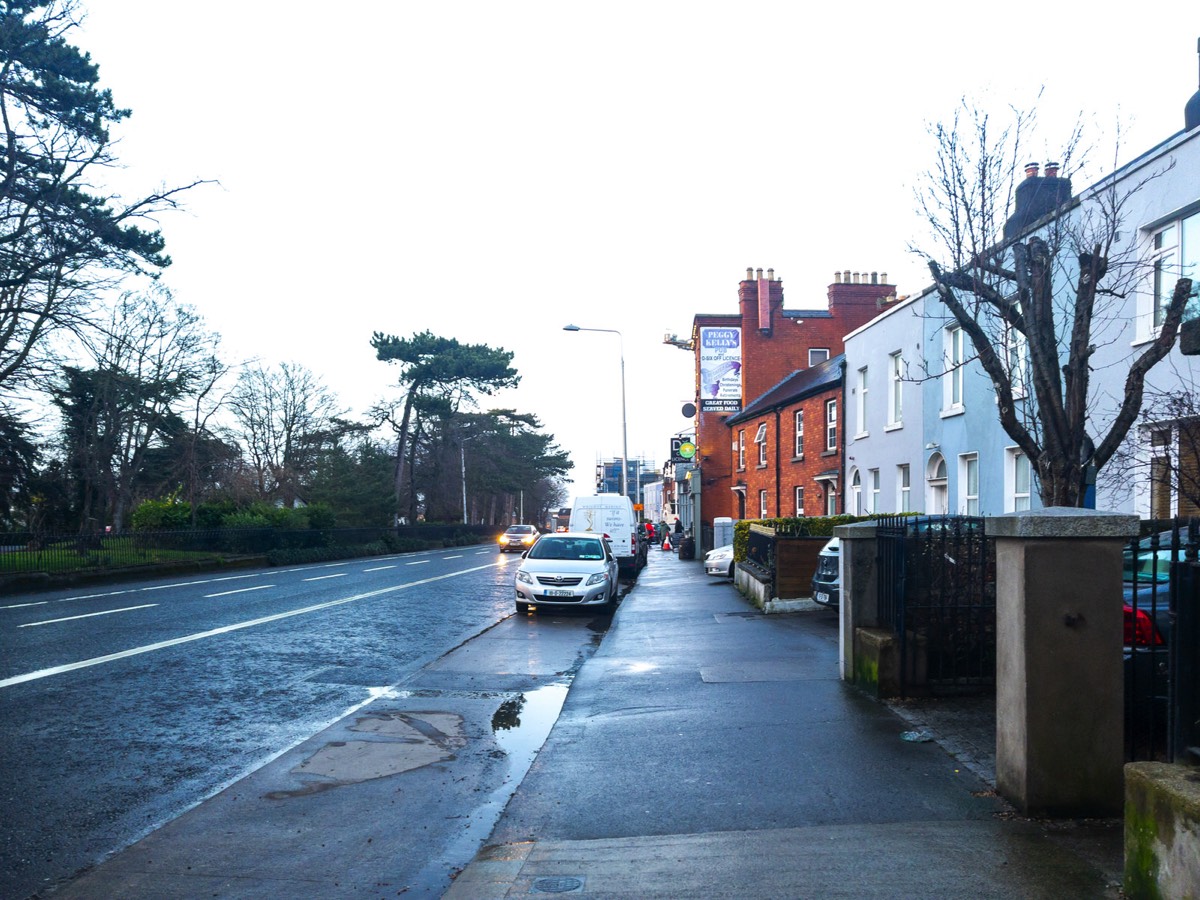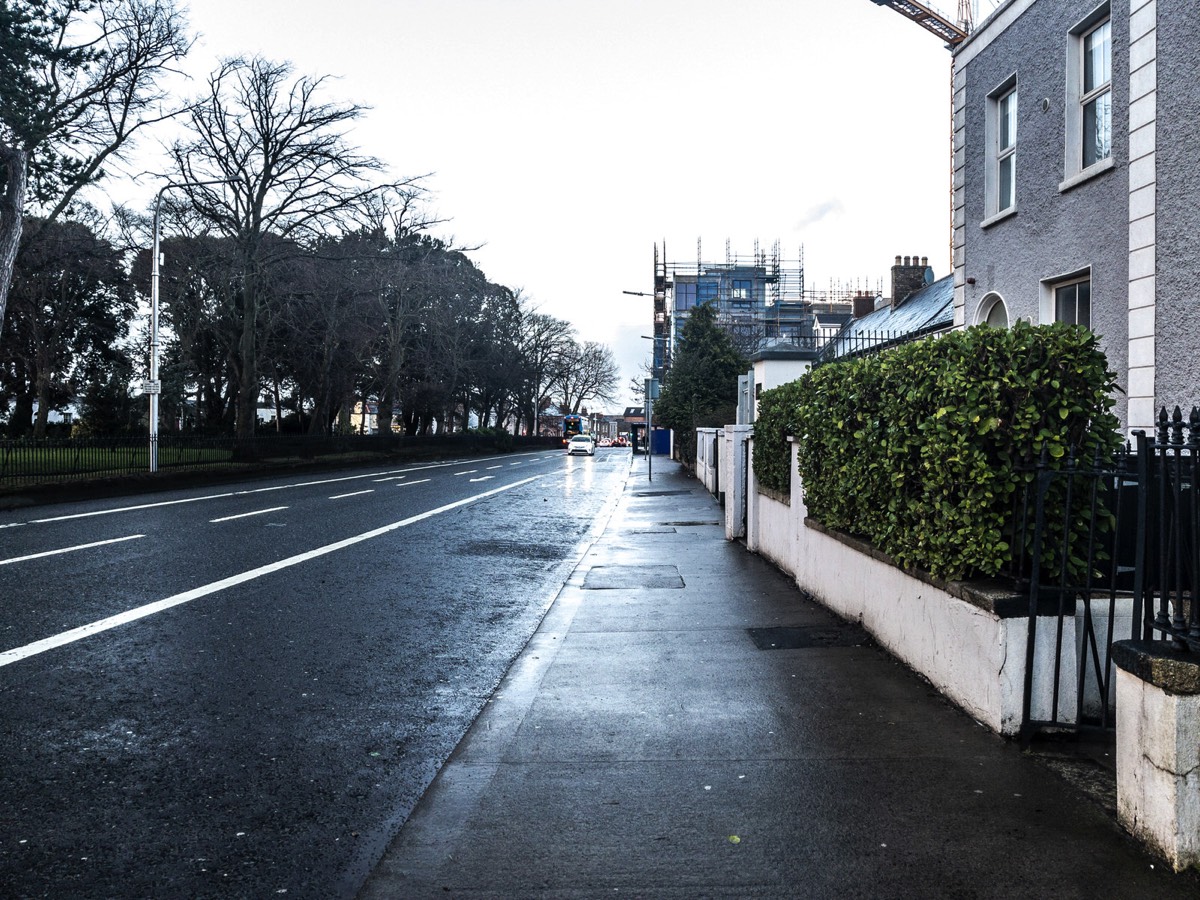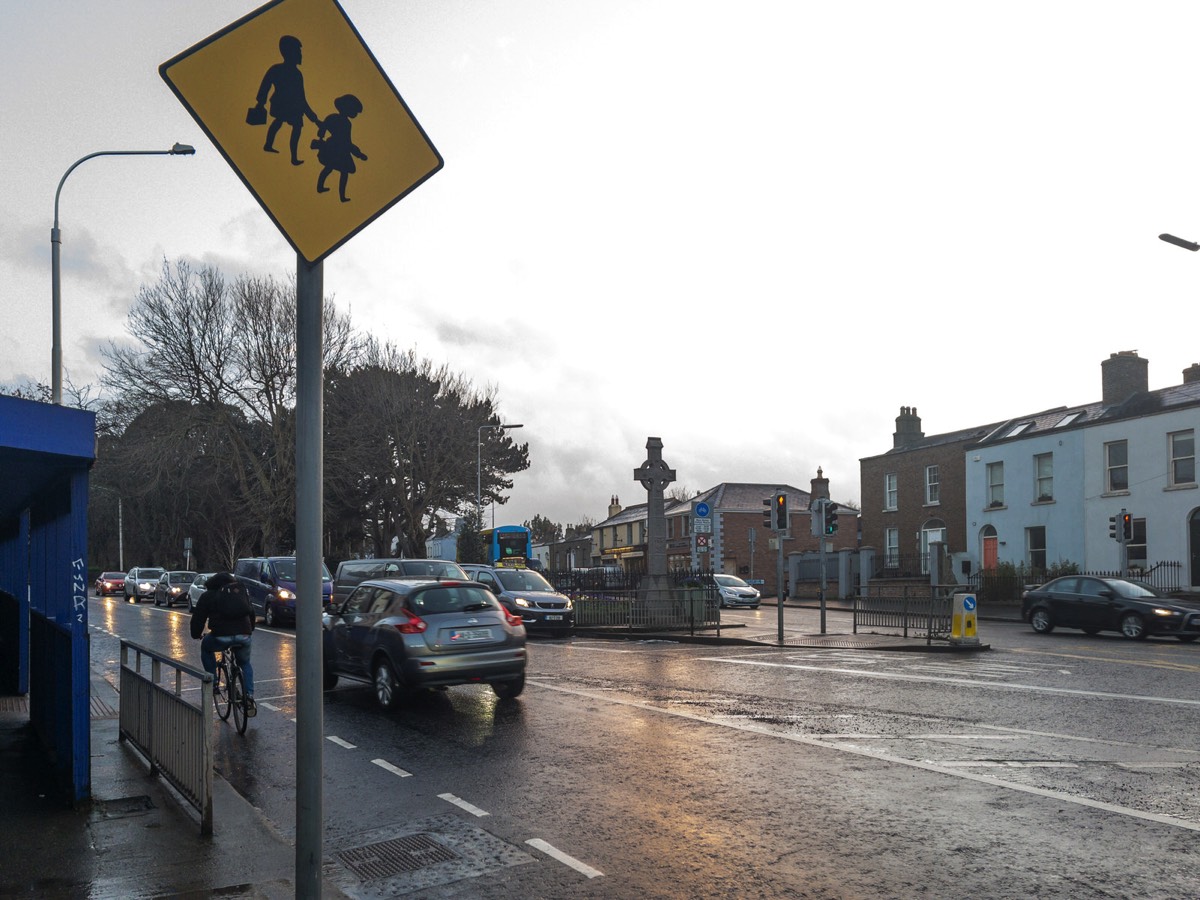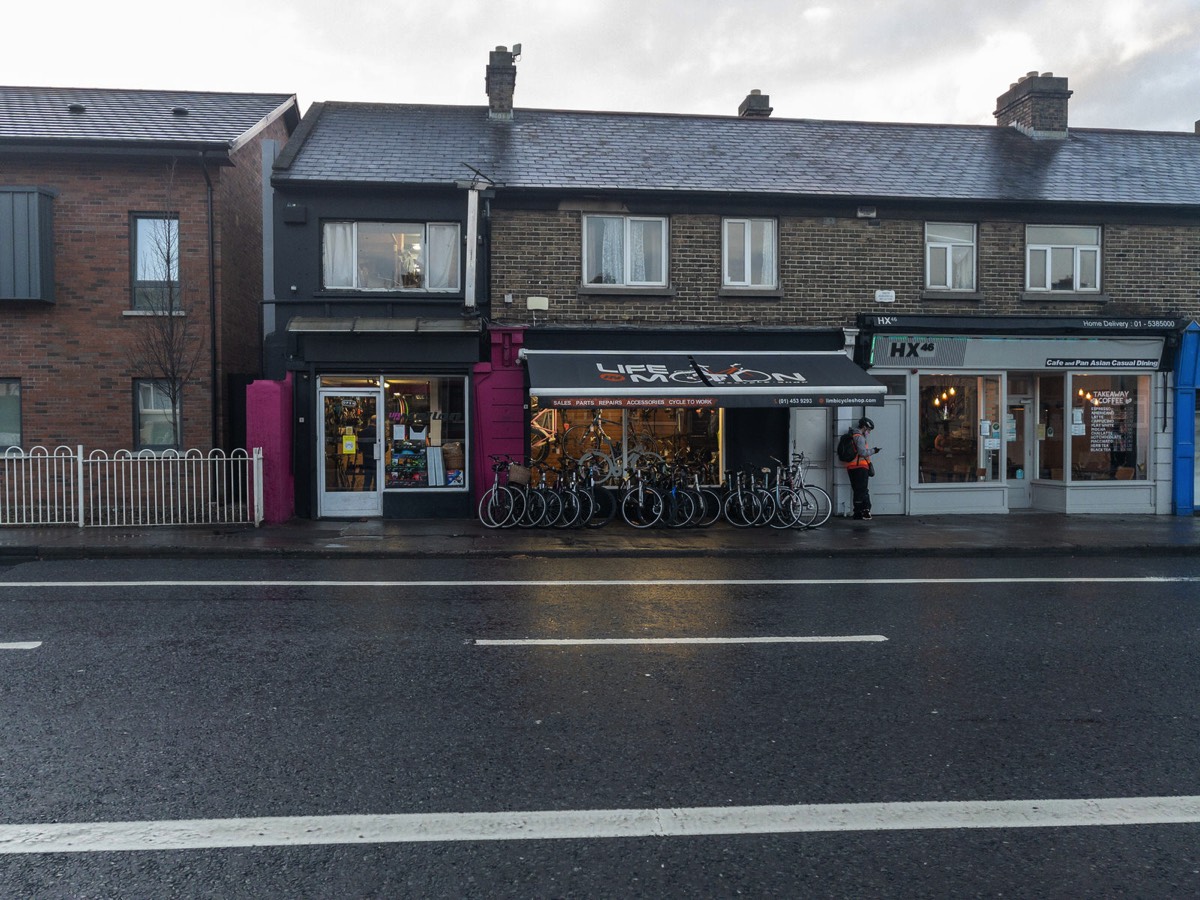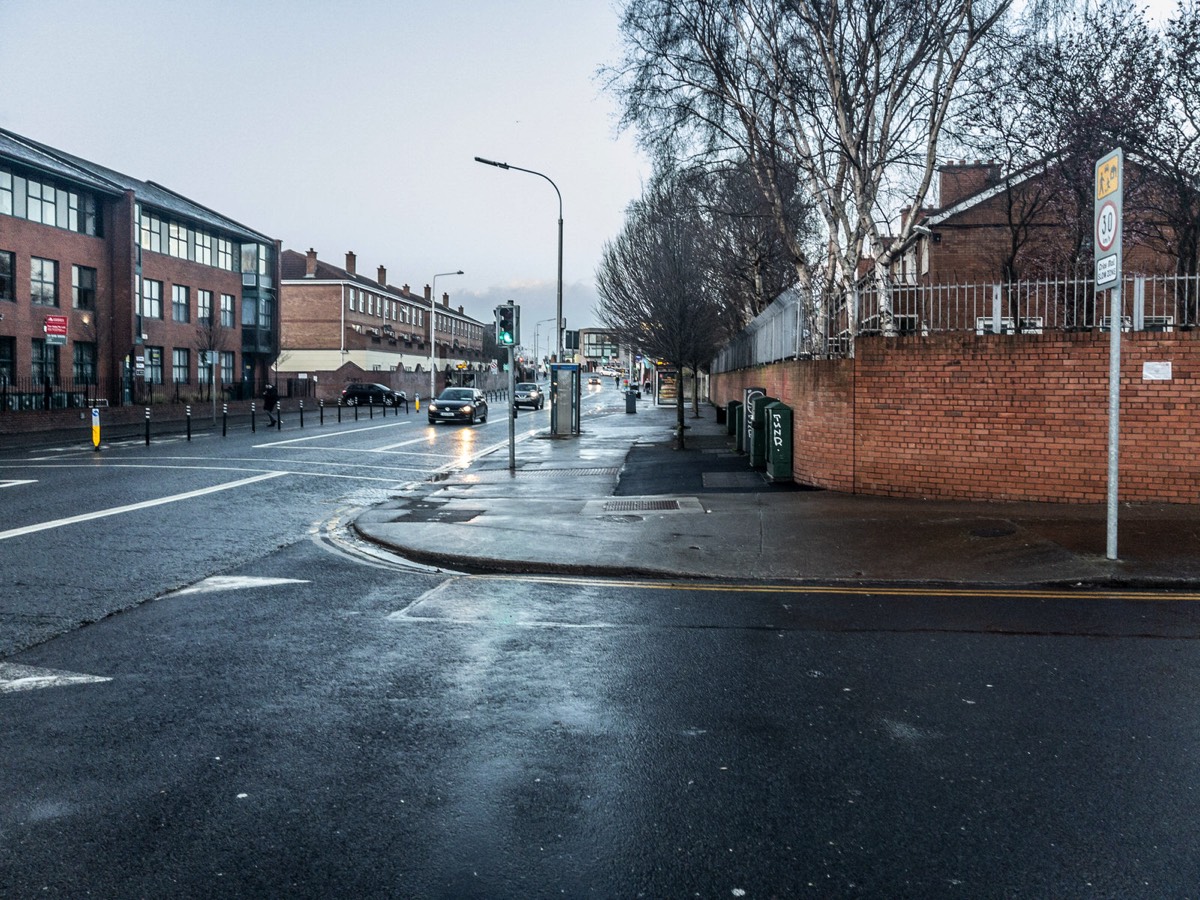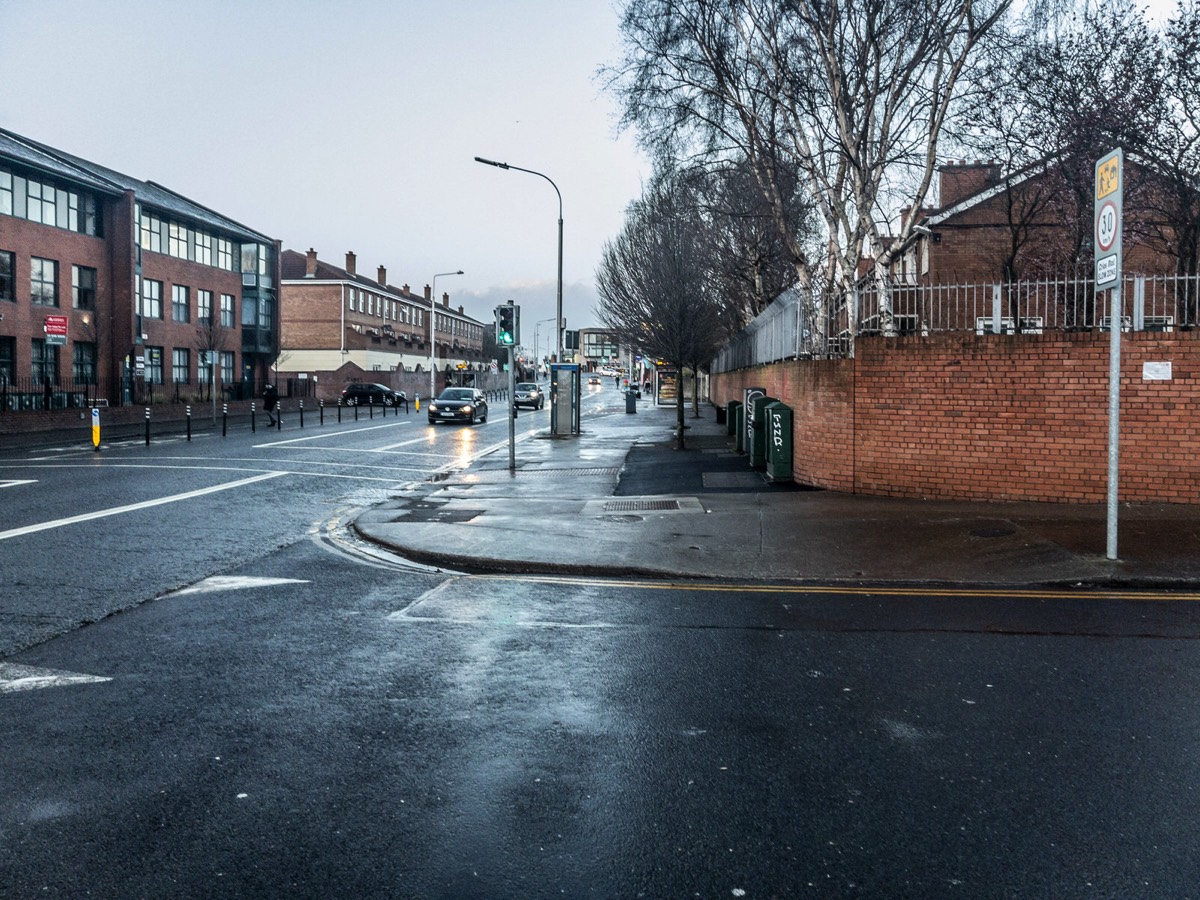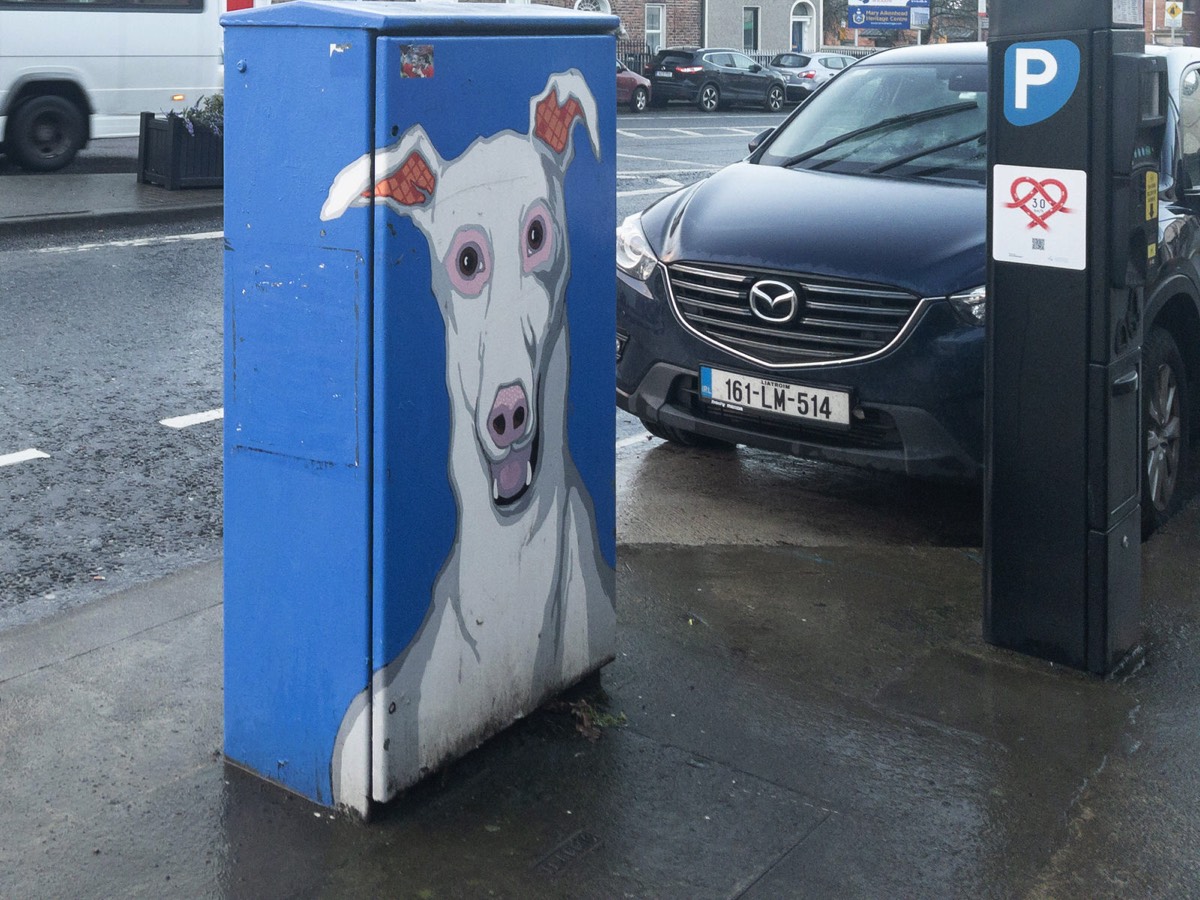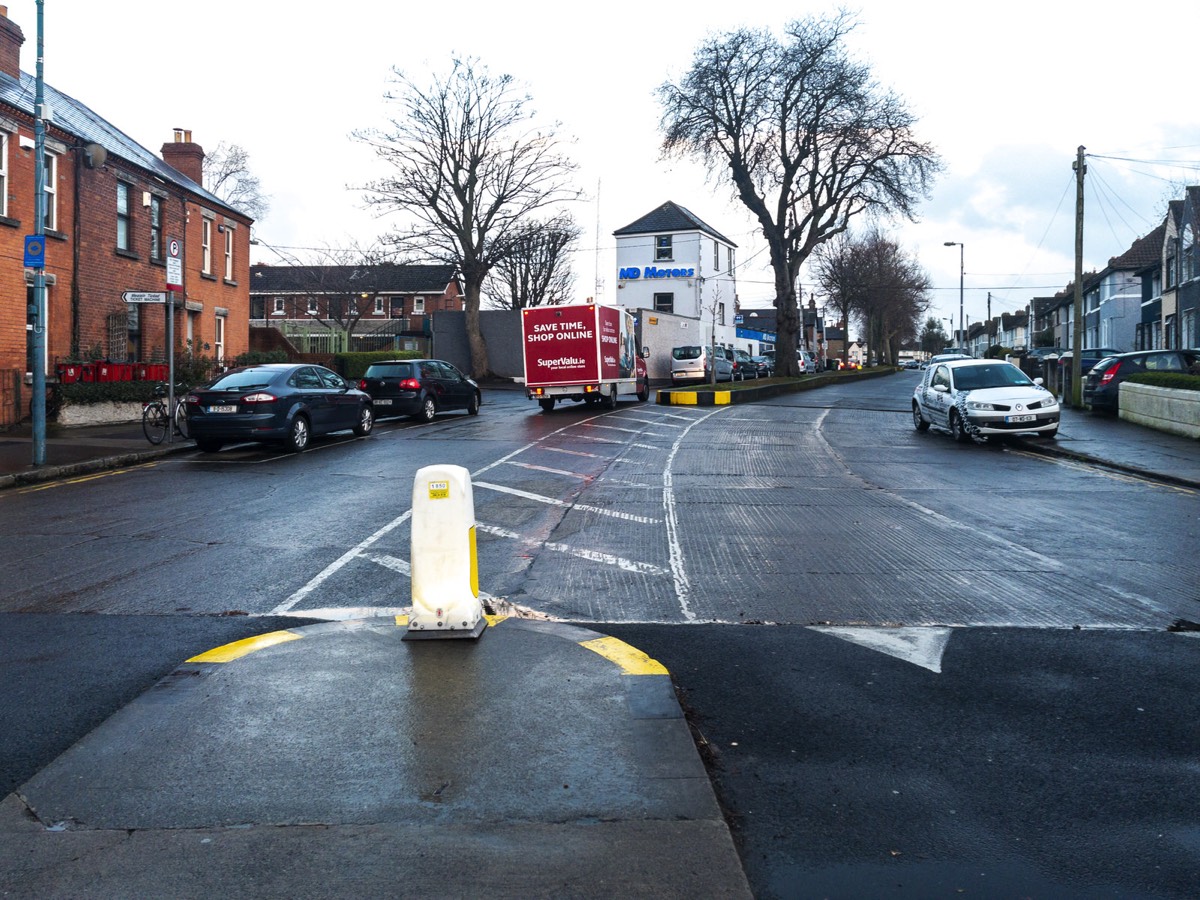IT WAS BLOWING UP A STORM AS I WALKED ALONG HAROLD'S CROSS ROAD
There are a number of competing explanations for the name of Harold's Cross, which has been extant for a very long time, and indeed whether there was an eponymous Harold, or whether the name referred to a class or group of "Haralds." Debating the question is considered a good way to start an argument in the area, since there is no clear or contemporaneously recorded answer (though many authoritatively stated, though significantly different, explanations since the 19th century), and there is at least some tenuous justification to each.
One explanation of the origin of the name is that it is derived from the name given to a gallows, which had been placed where the current Harold's Cross Park is situated; however, gallows in medieval times were primarily used to support weighing scales for markets and toll/tax collection and less for executions (see the discussion below.) It is the case that Harold's Cross was an execution ground for the city of Dublin up to the 18th century, but it also was a key entry point to the greater city where tolls might have been collected. In the 14th century a gallows there was maintained by the Archbishop.
Another explanation is that Harold's Cross stands on lands which formed, like those of Rathmines, part of the Manor of St. Sepulchre, and its name is said to have originated in a cross which marked the boundary of the lands of the Archbishop of Dublin, and warned the Harolds (or Haralds/Harrals/Harrels), the wild guardians of the border of the Pale near Whitechurch that they must not encroach beyond that point. The De Meones family, who gave their name to Rathmines, also owned lands at Harold's Cross in the fourteenth century.
Yet another explanation is that it is derived from a stone cross that marked the boundary of lands held by the Danish Viking Harold family of Rathfarnham in early medieval times, reputedly located at what is now the five-road Kenilworth junction on Harold's Cross Road.
A variation on these explanations is derived from the traditional use of gallows as public weighing scales (and not just a means of public execution) and suggests that the cross was used to weigh certain goods entering or exiting the city of Dublin by this boundary, so as to charge a tax or tariff, or that a fee was charged by weight for goods crossing a ford over one of the watercourses that predated the Grand Canal by one or more of the families, groups or individuals described as controlling the area above.
One explanation of the origin of the name is that it is derived from the name given to a gallows, which had been placed where the current Harold's Cross Park is situated; however, gallows in medieval times were primarily used to support weighing scales for markets and toll/tax collection and less for executions (see the discussion below.) It is the case that Harold's Cross was an execution ground for the city of Dublin up to the 18th century, but it also was a key entry point to the greater city where tolls might have been collected. In the 14th century a gallows there was maintained by the Archbishop.
Another explanation is that Harold's Cross stands on lands which formed, like those of Rathmines, part of the Manor of St. Sepulchre, and its name is said to have originated in a cross which marked the boundary of the lands of the Archbishop of Dublin, and warned the Harolds (or Haralds/Harrals/Harrels), the wild guardians of the border of the Pale near Whitechurch that they must not encroach beyond that point. The De Meones family, who gave their name to Rathmines, also owned lands at Harold's Cross in the fourteenth century.
Yet another explanation is that it is derived from a stone cross that marked the boundary of lands held by the Danish Viking Harold family of Rathfarnham in early medieval times, reputedly located at what is now the five-road Kenilworth junction on Harold's Cross Road.
A variation on these explanations is derived from the traditional use of gallows as public weighing scales (and not just a means of public execution) and suggests that the cross was used to weigh certain goods entering or exiting the city of Dublin by this boundary, so as to charge a tax or tariff, or that a fee was charged by weight for goods crossing a ford over one of the watercourses that predated the Grand Canal by one or more of the families, groups or individuals described as controlling the area above.
You will find links to buy products from Amazon, Google and other partners. If you click on these links, you’ll find that the URL includes a small extra piece of text which identifies that the click came from my websites. This text is an affiliate code, and it means that I get a small percentage of the money you spend if you choose to buy that product, or, in some cases, other products from the site soon after. These affiliate links help pay the costs of producing my websites and ensure that the content is free to you.
COPYRIGHT INFORMATION BELOW APPLIES ONLY TO PHOTOGRAPHS

This work by William Murphy aka Infomatique is licensed under a Creative Commons Attribution-NonCommercial-ShareAlike 4.0 International License.
Permissions beyond the scope of this license may be available at https://excellentstreetimages.com/in-the-year-twentytwenty/copyright/.
